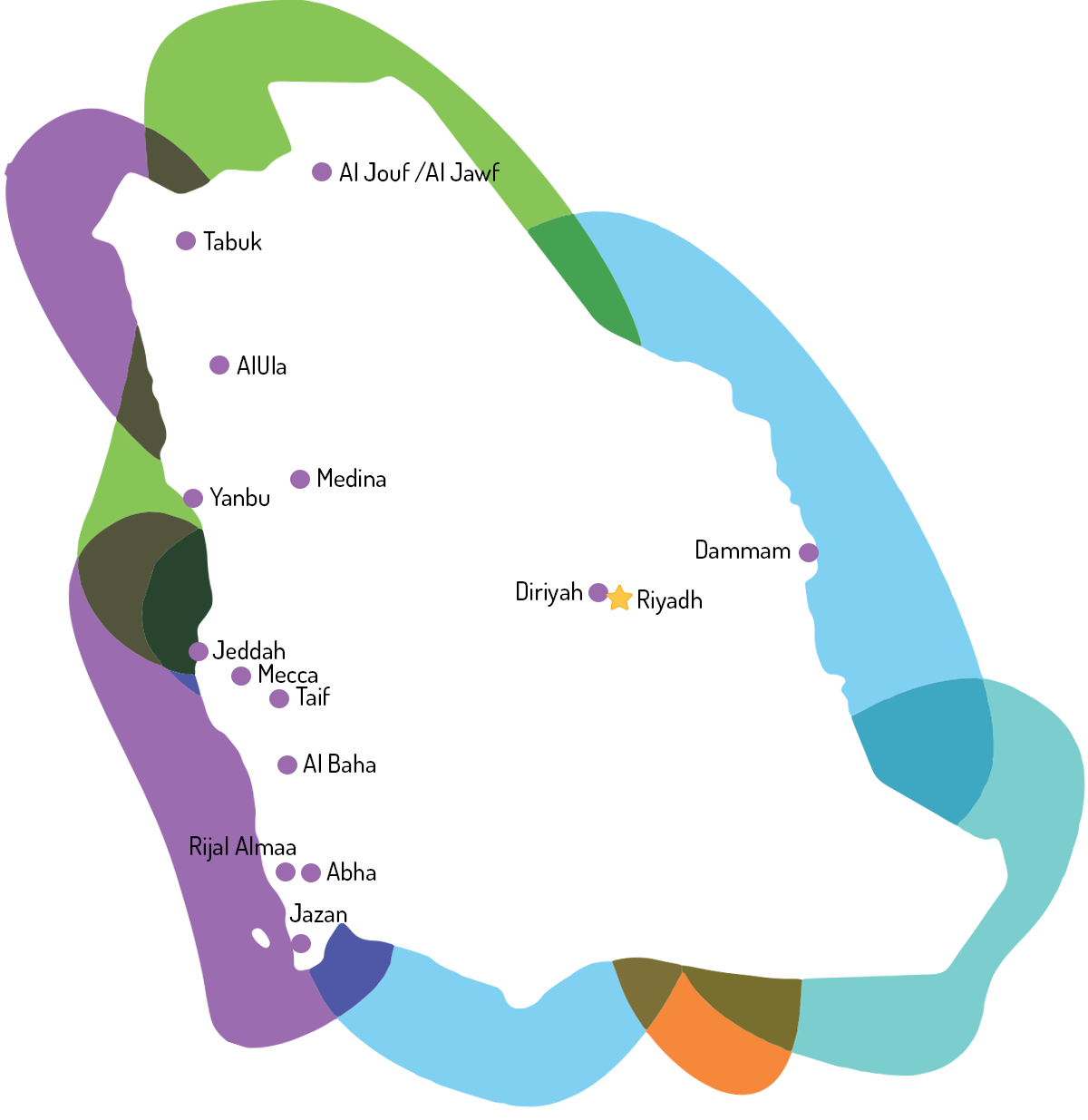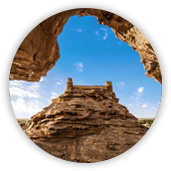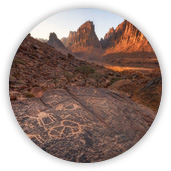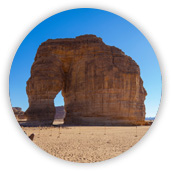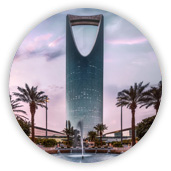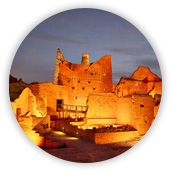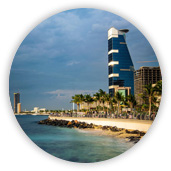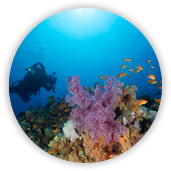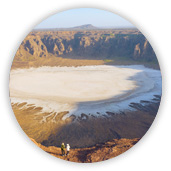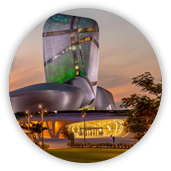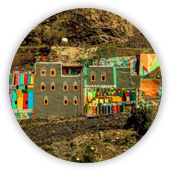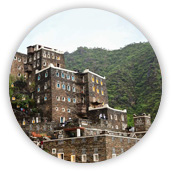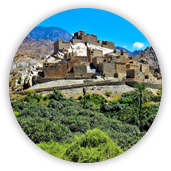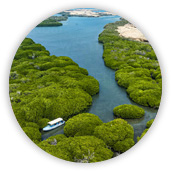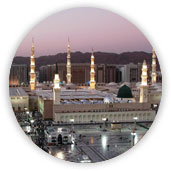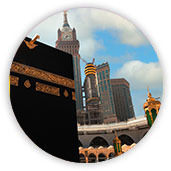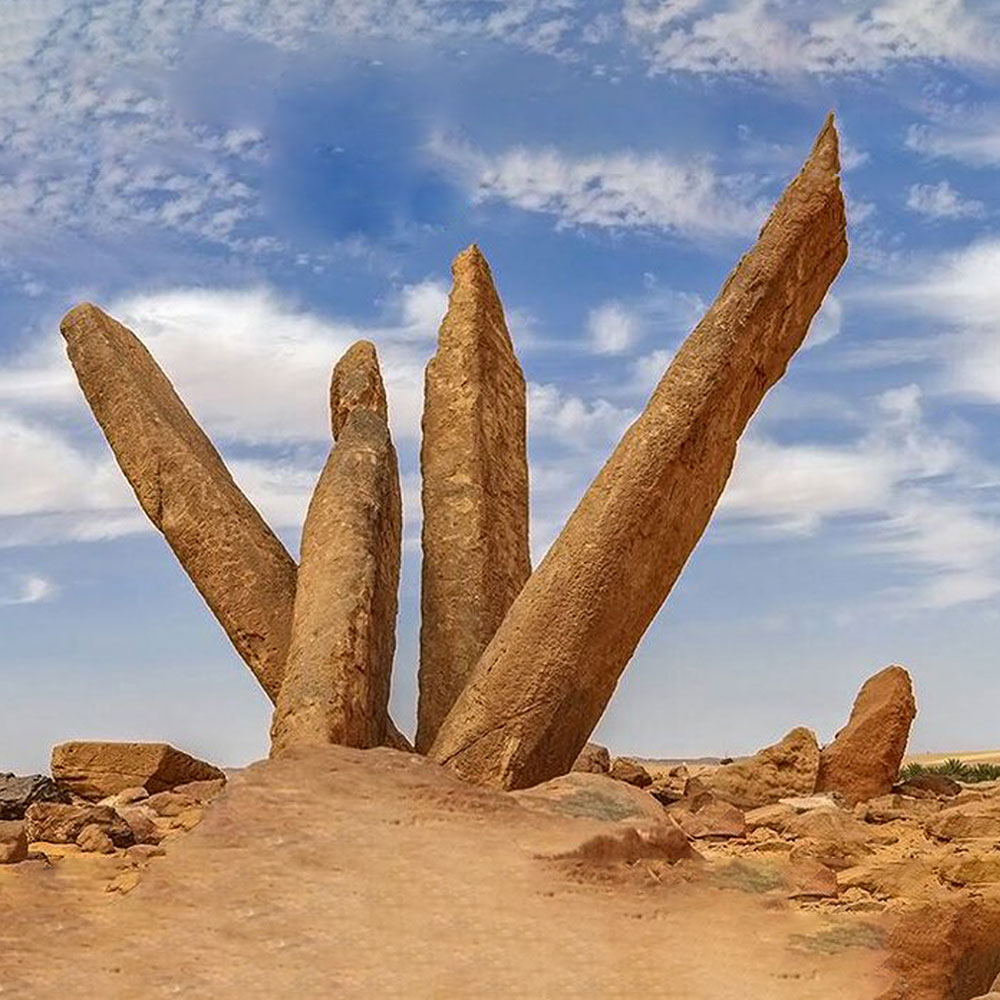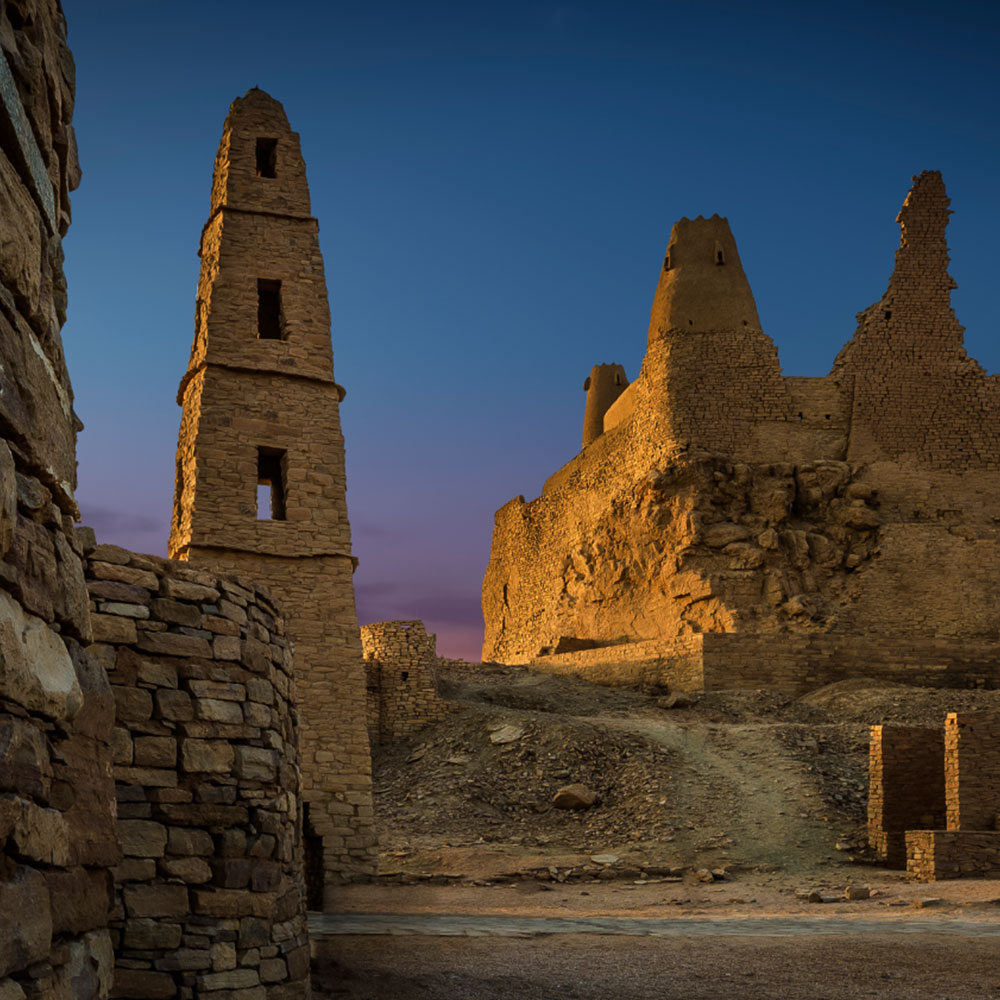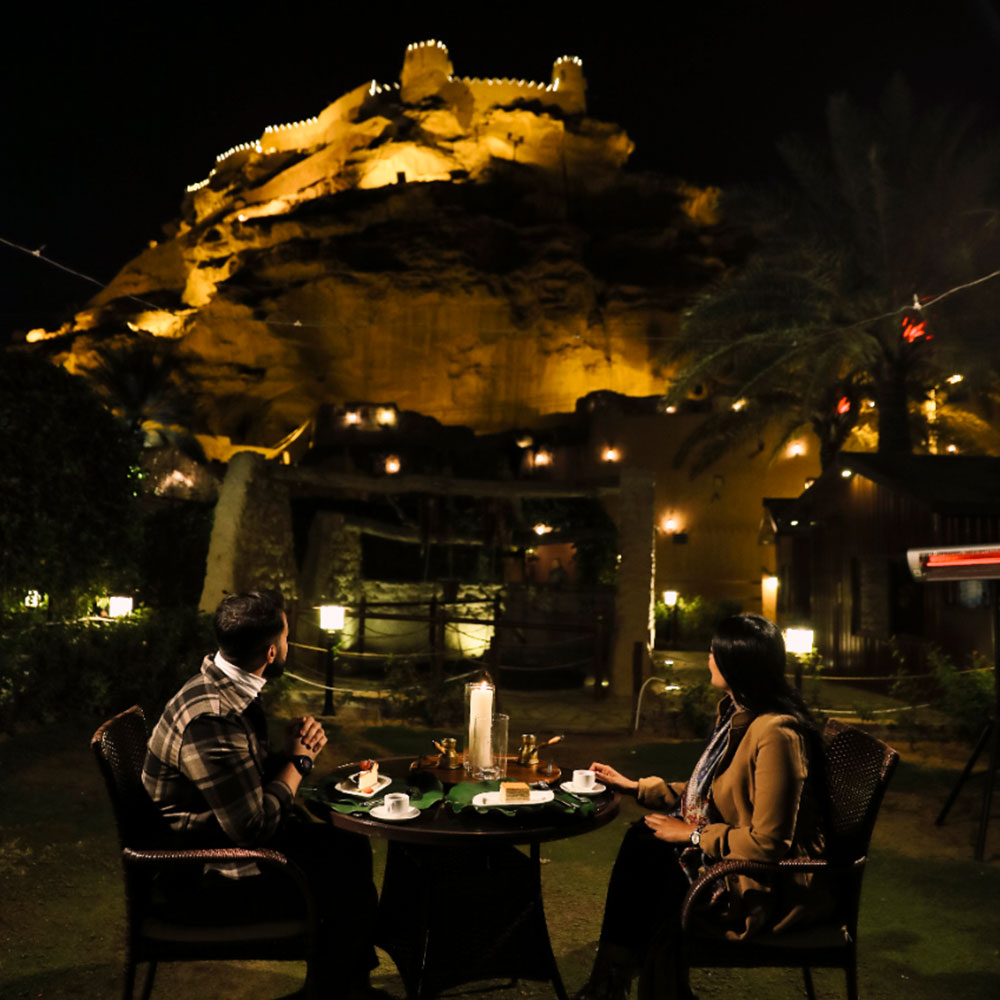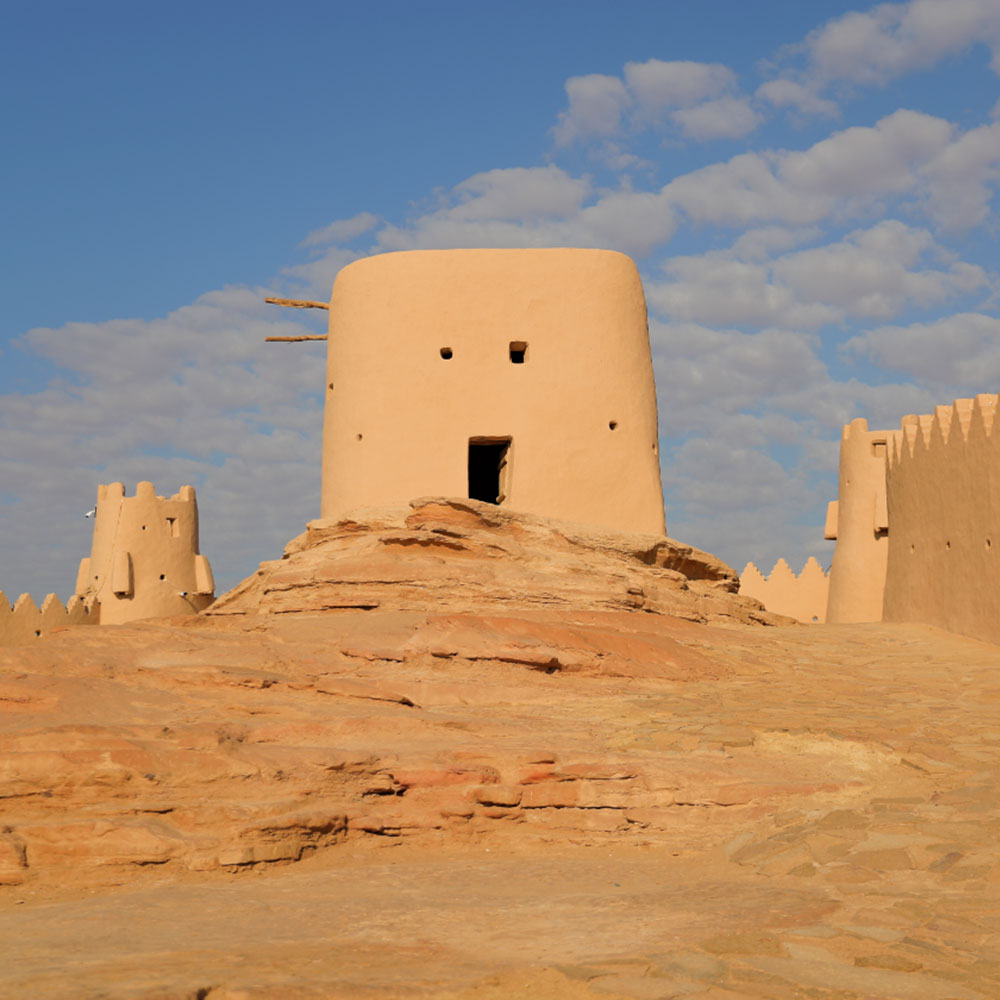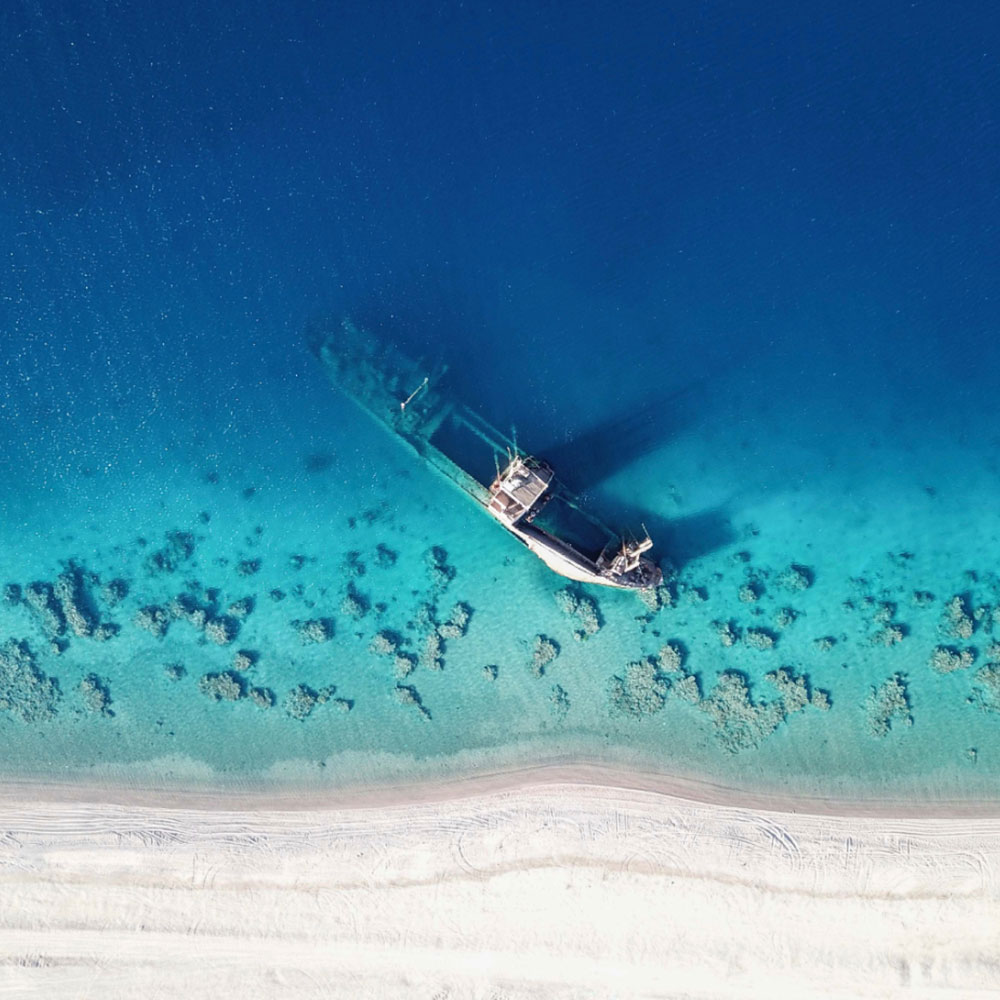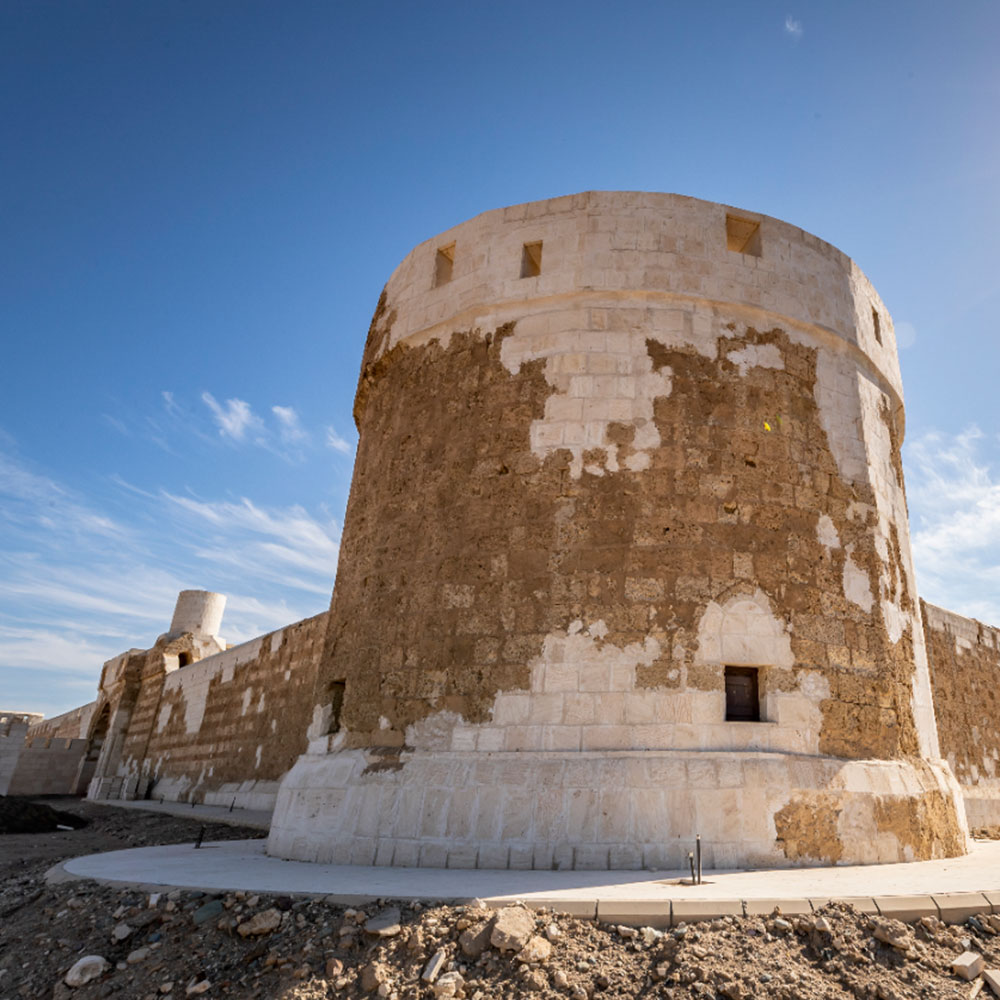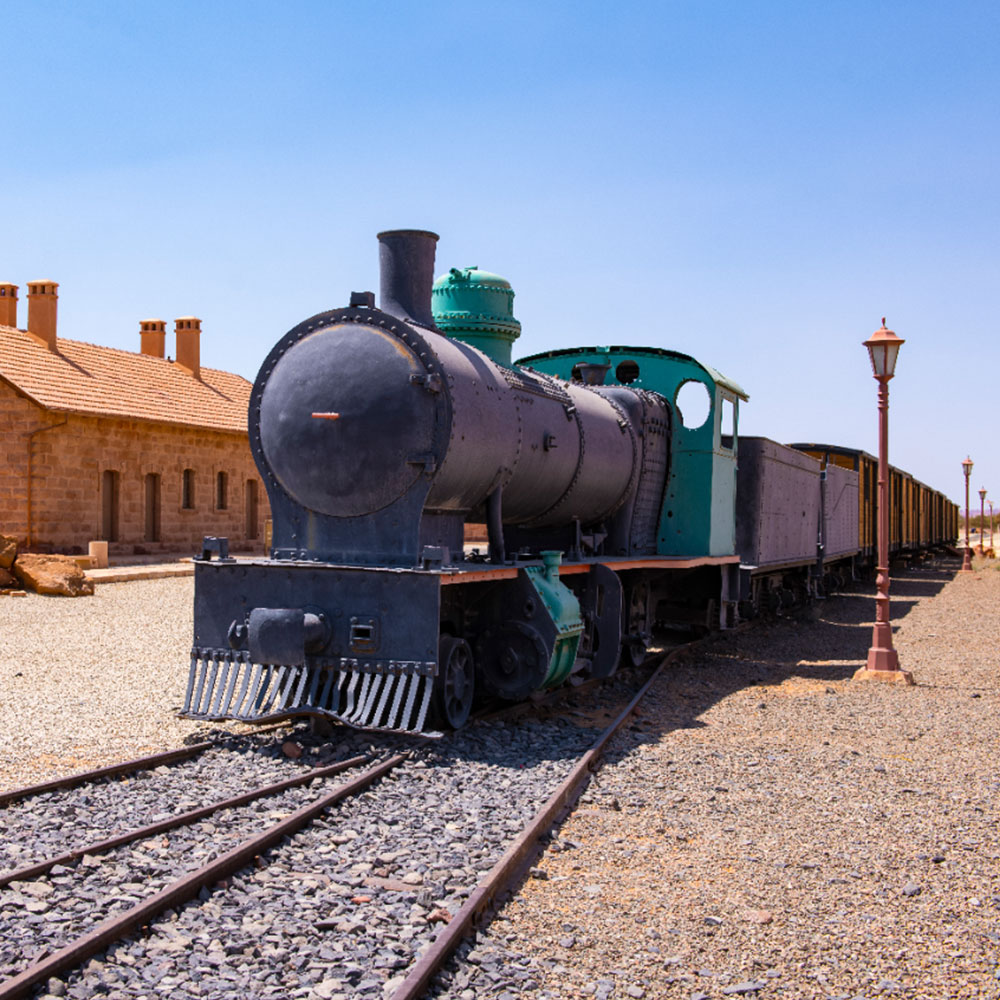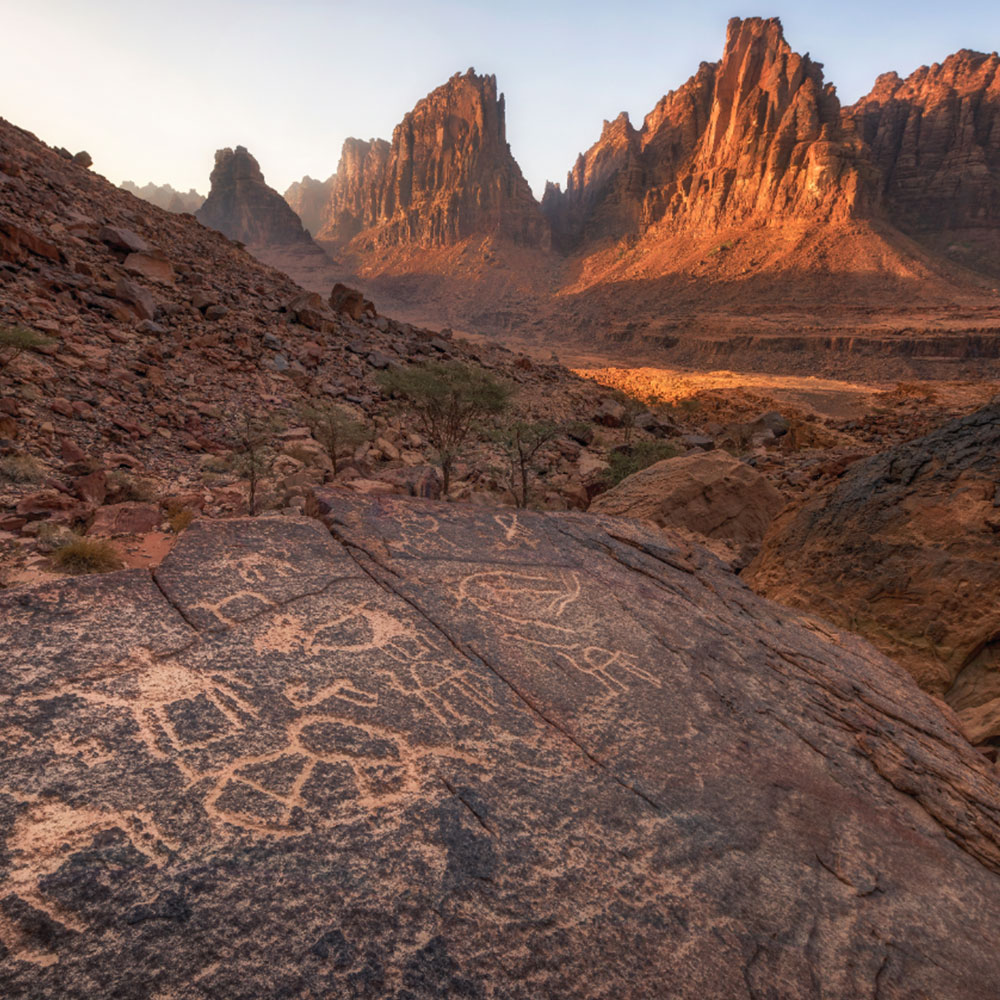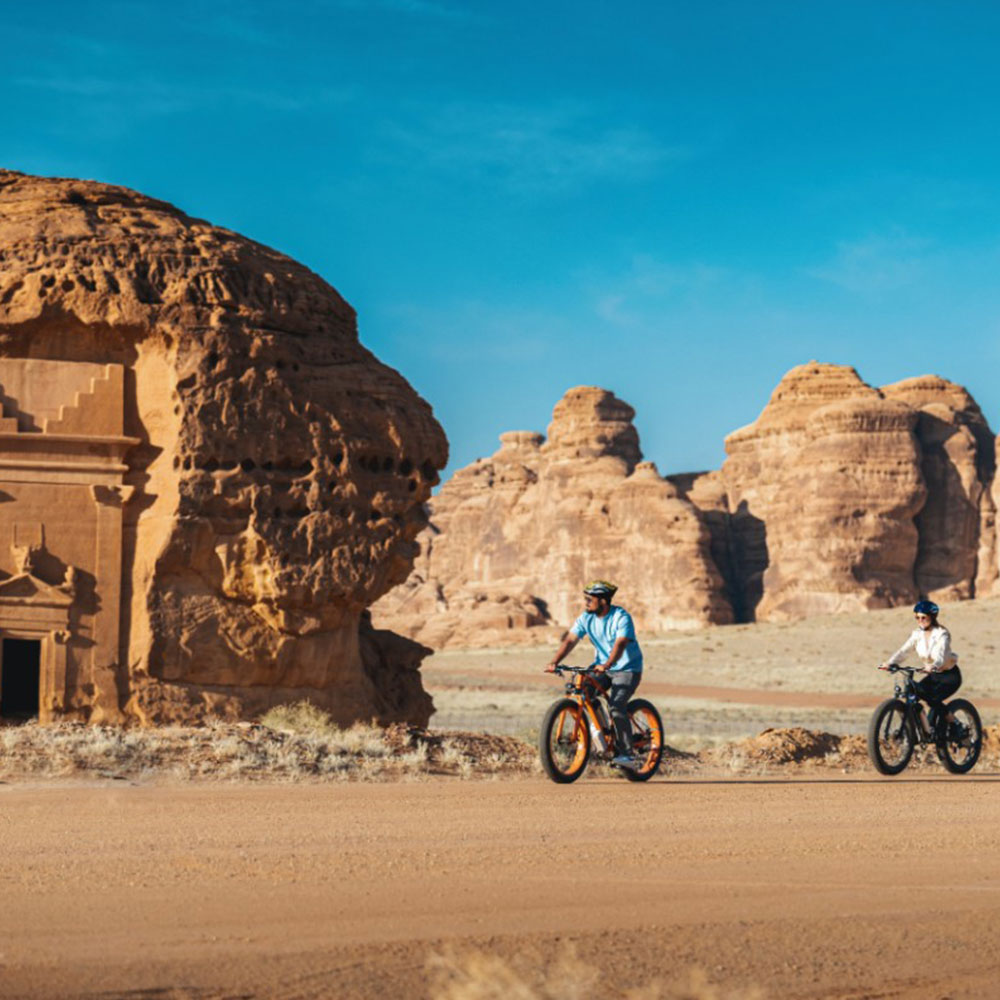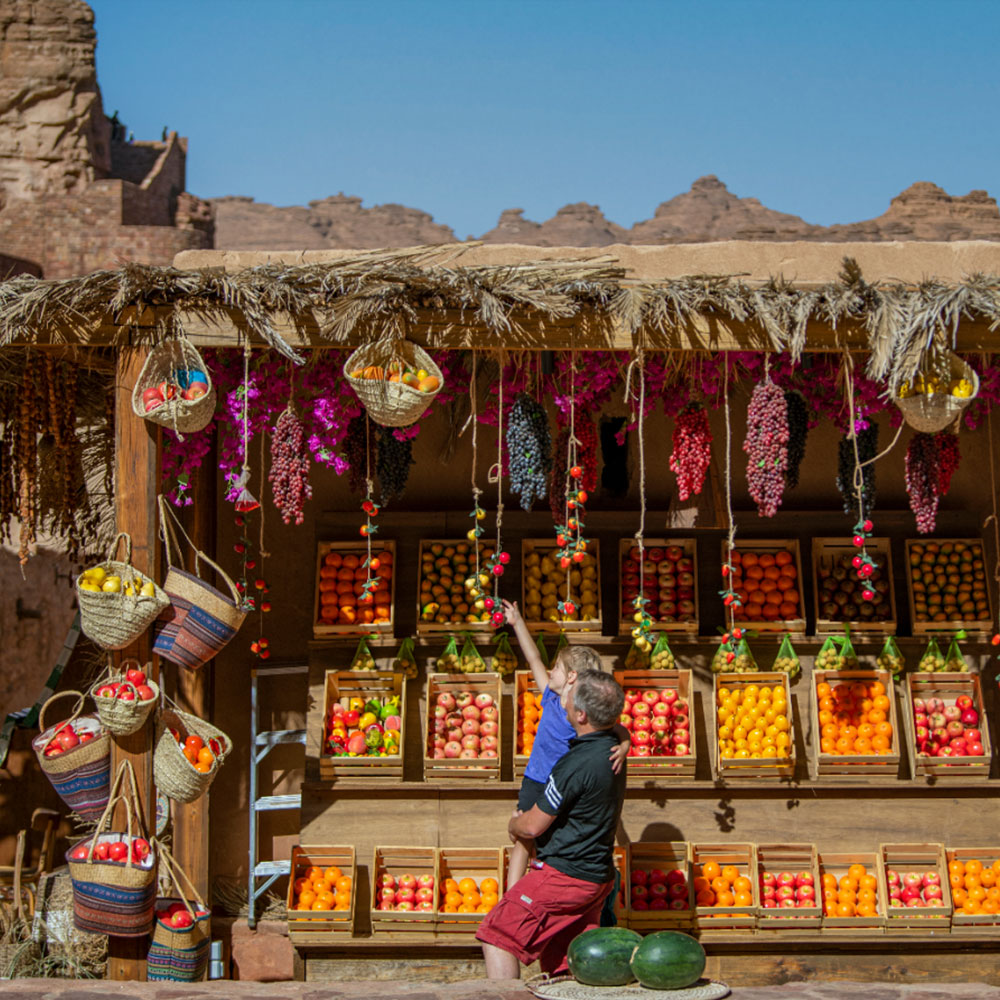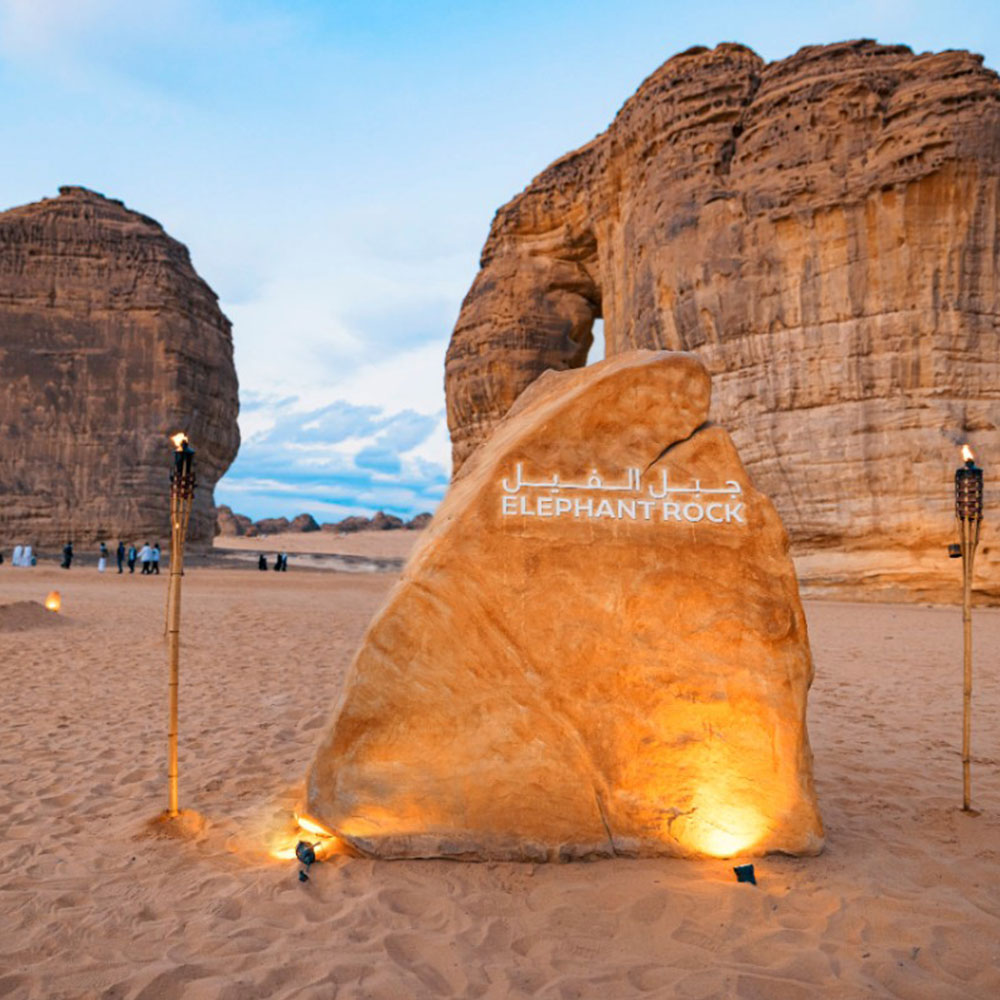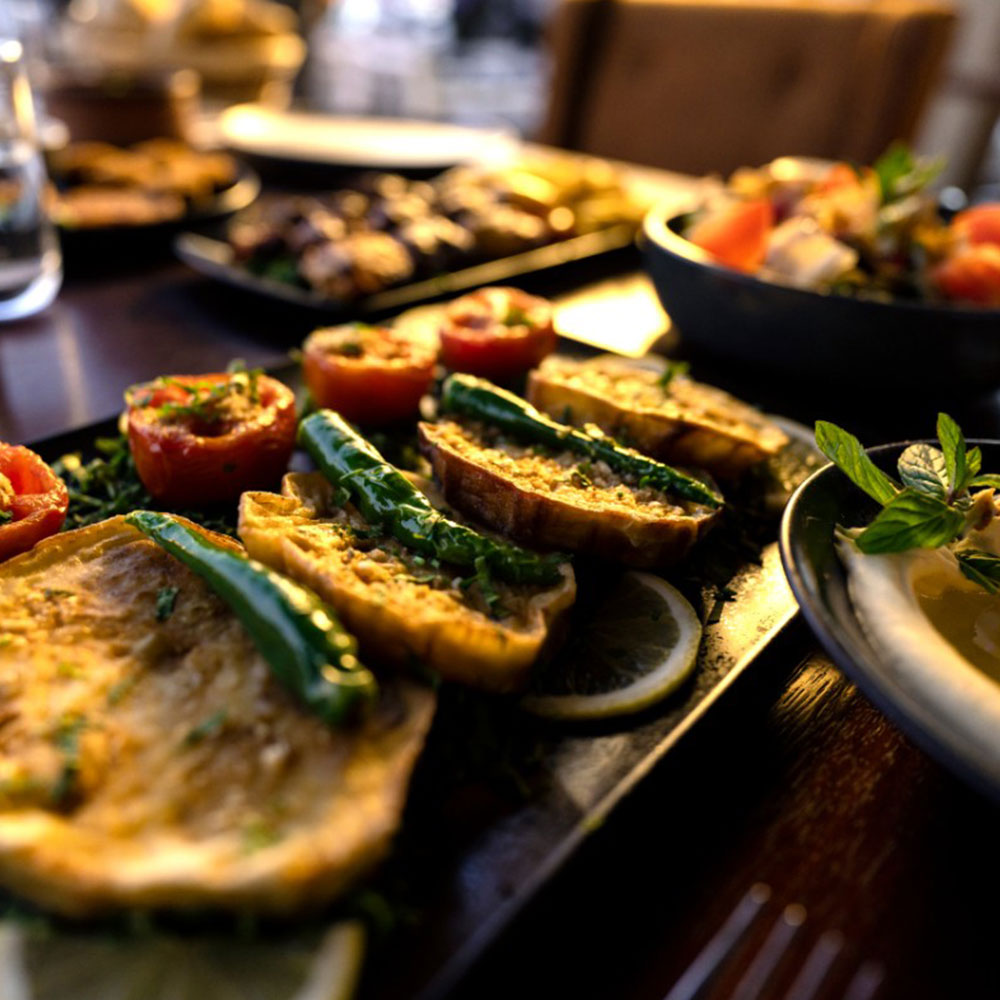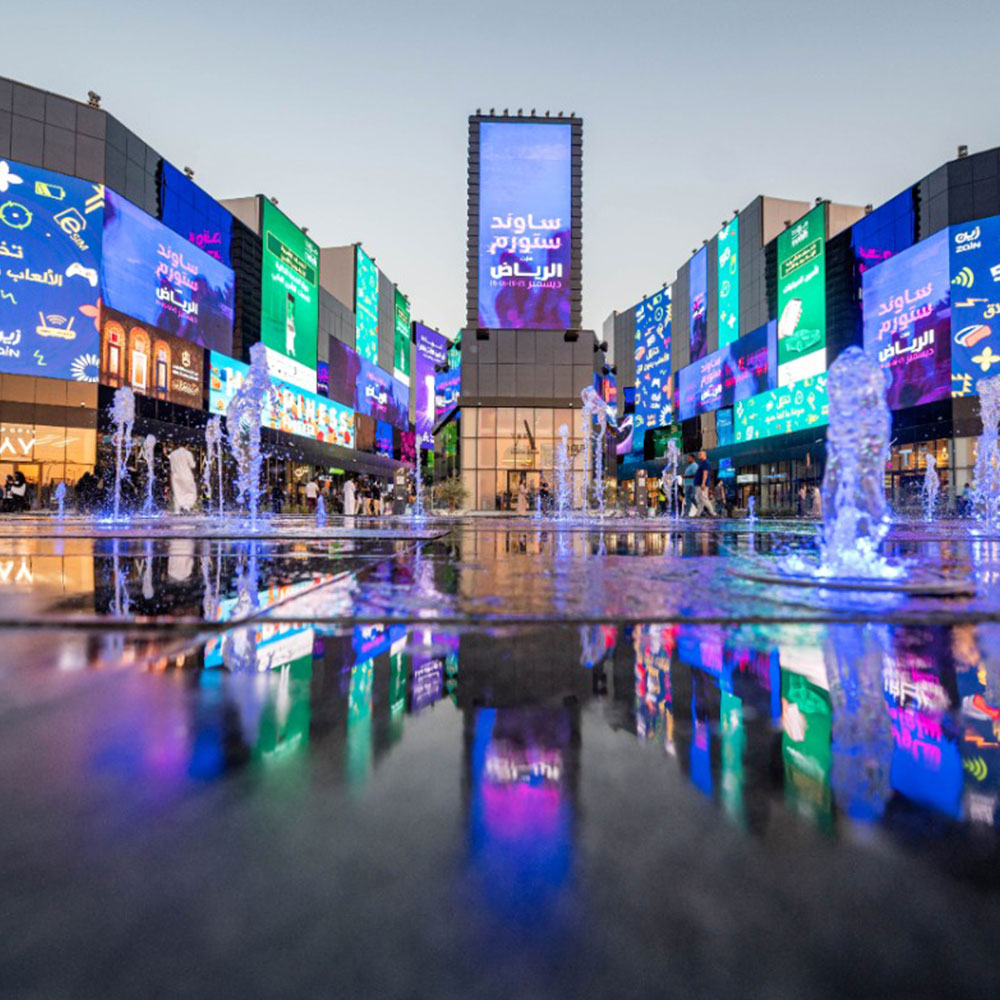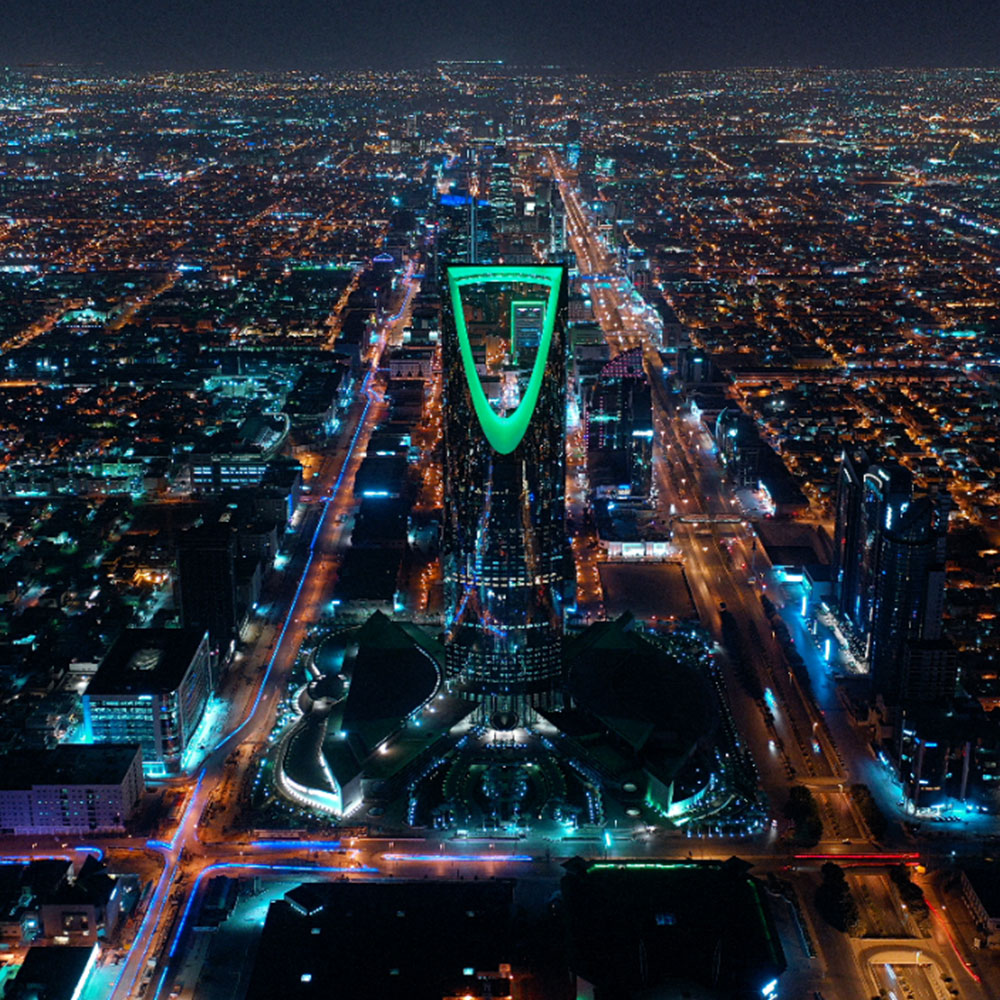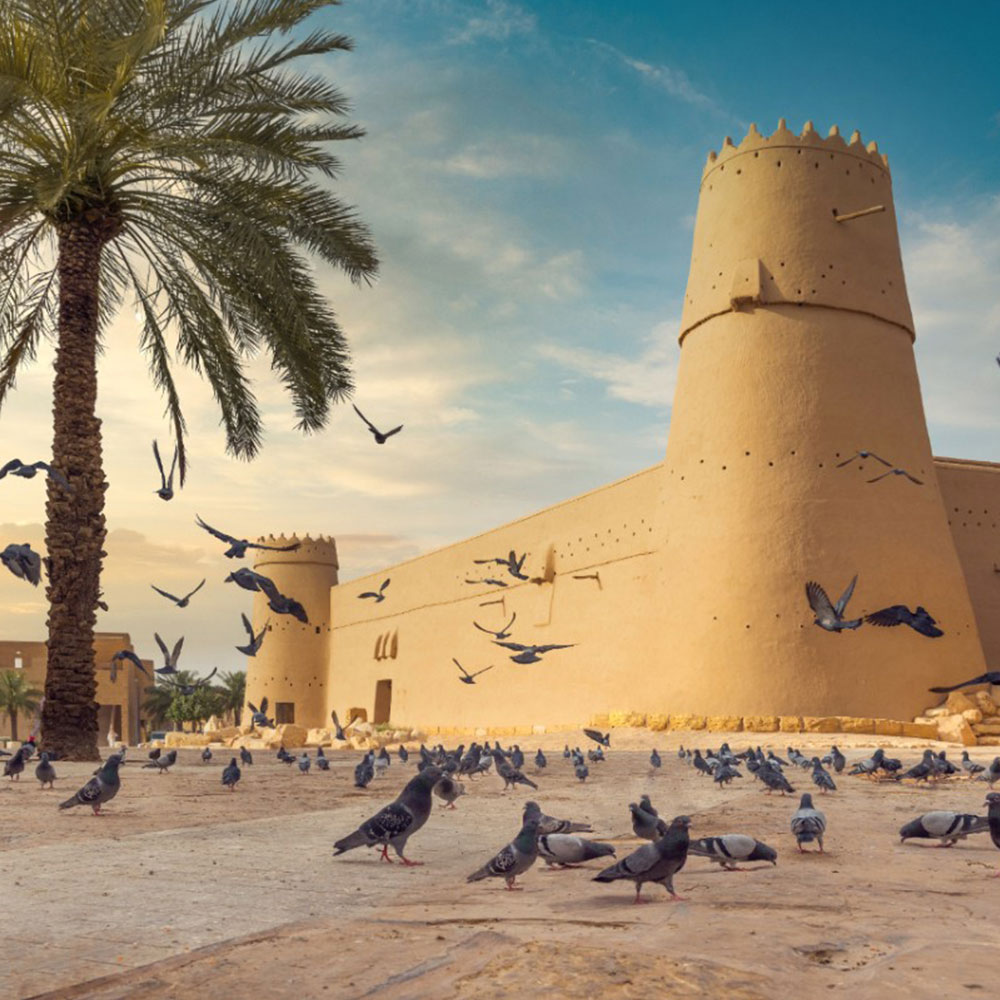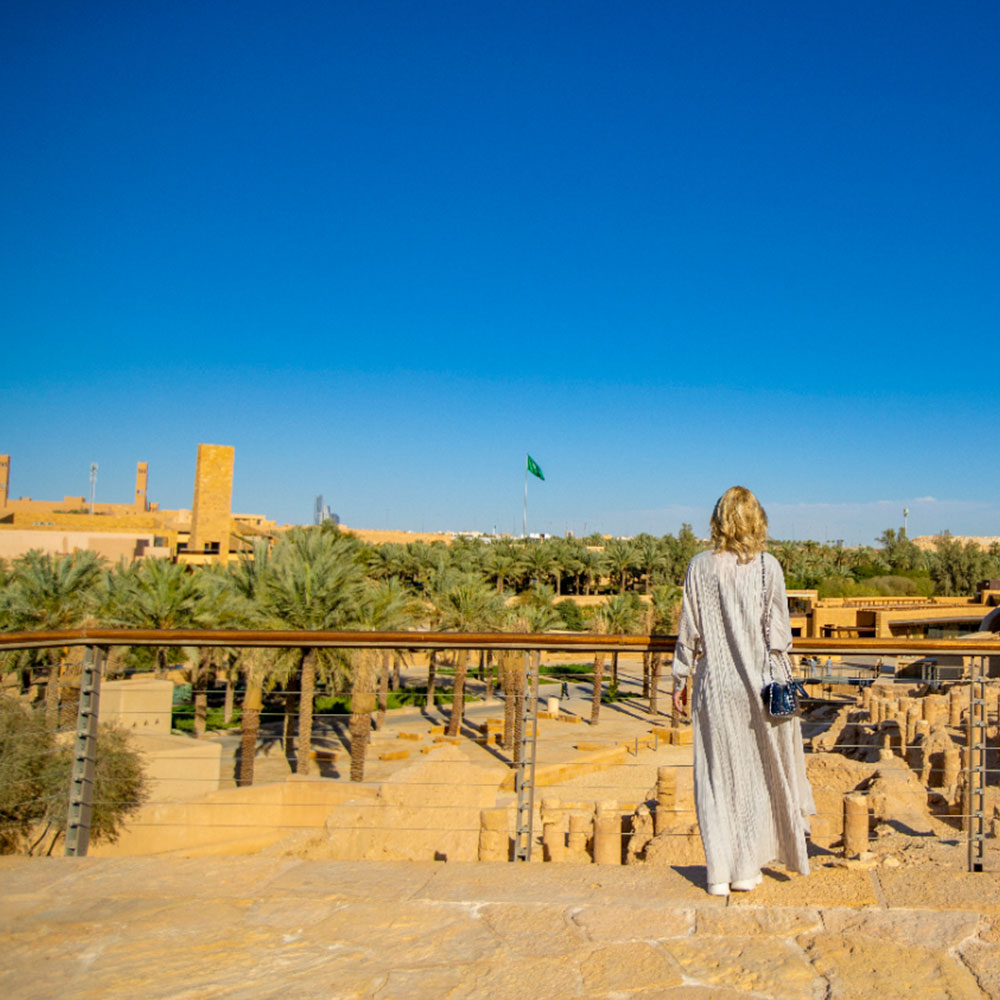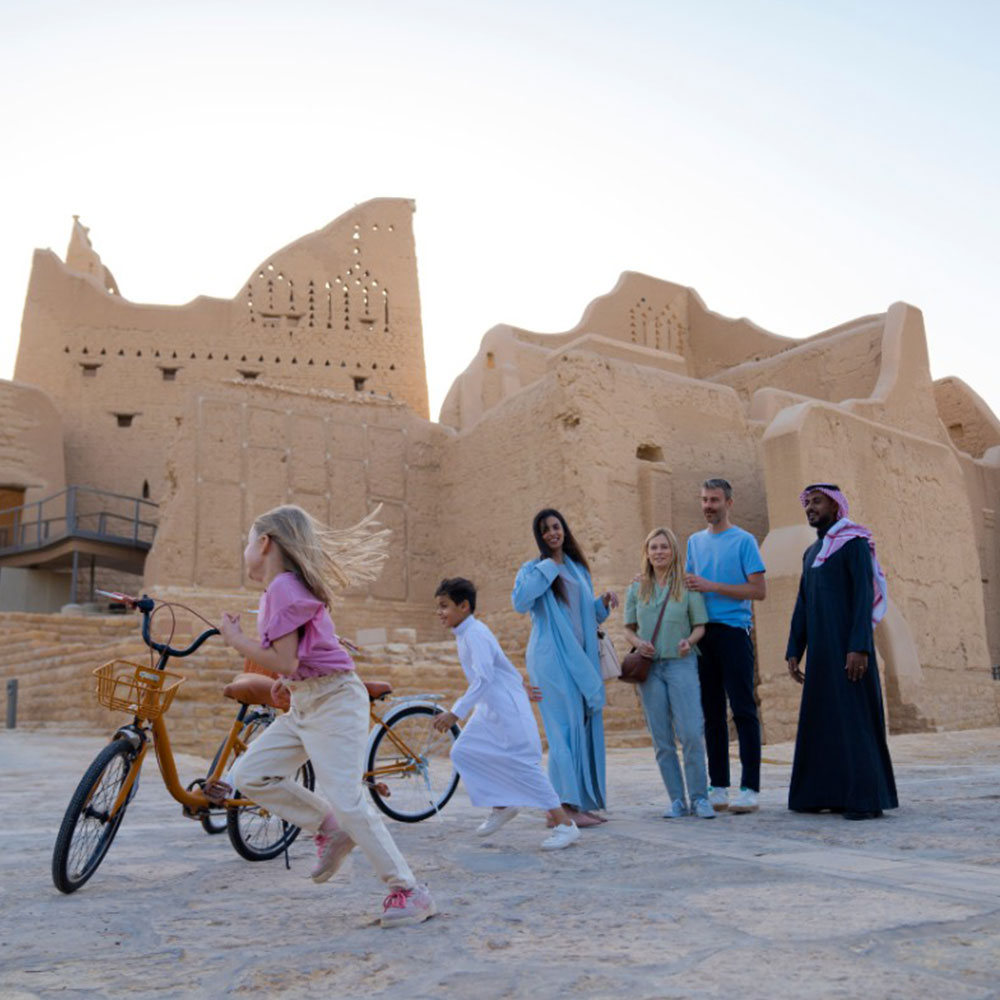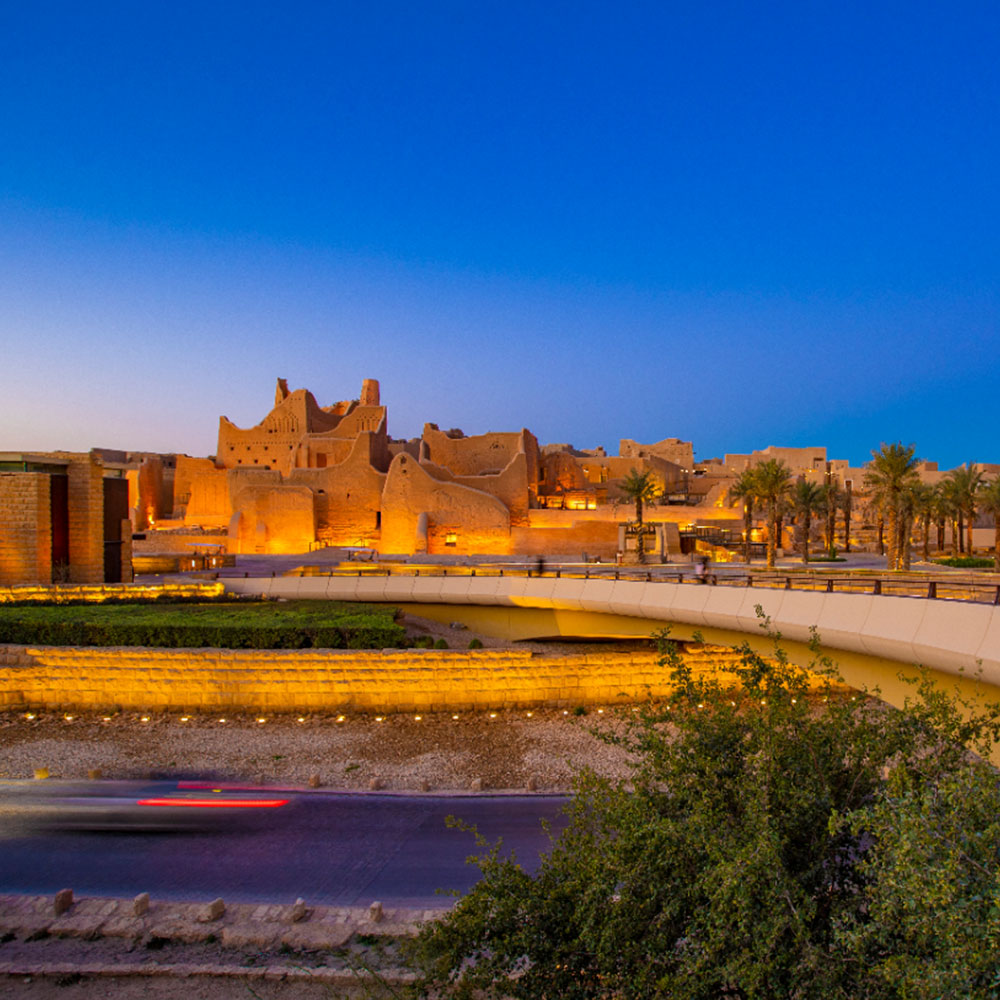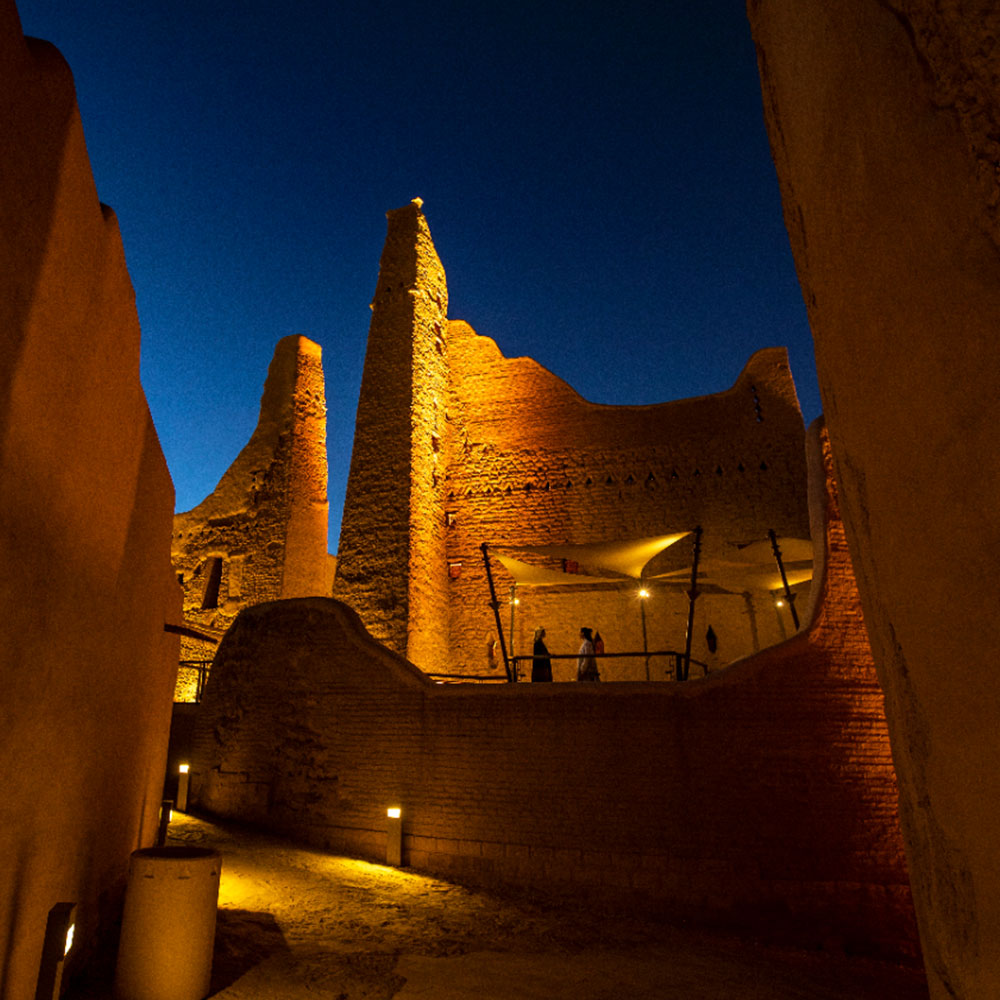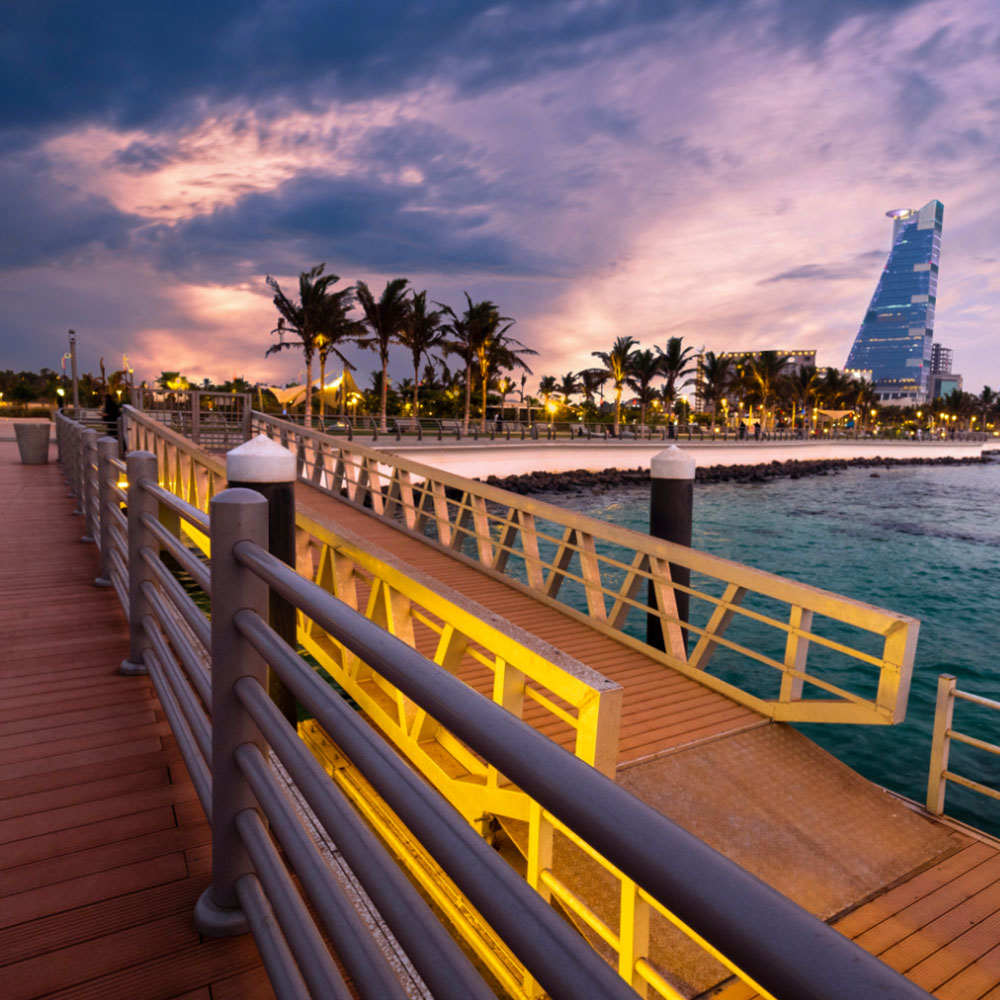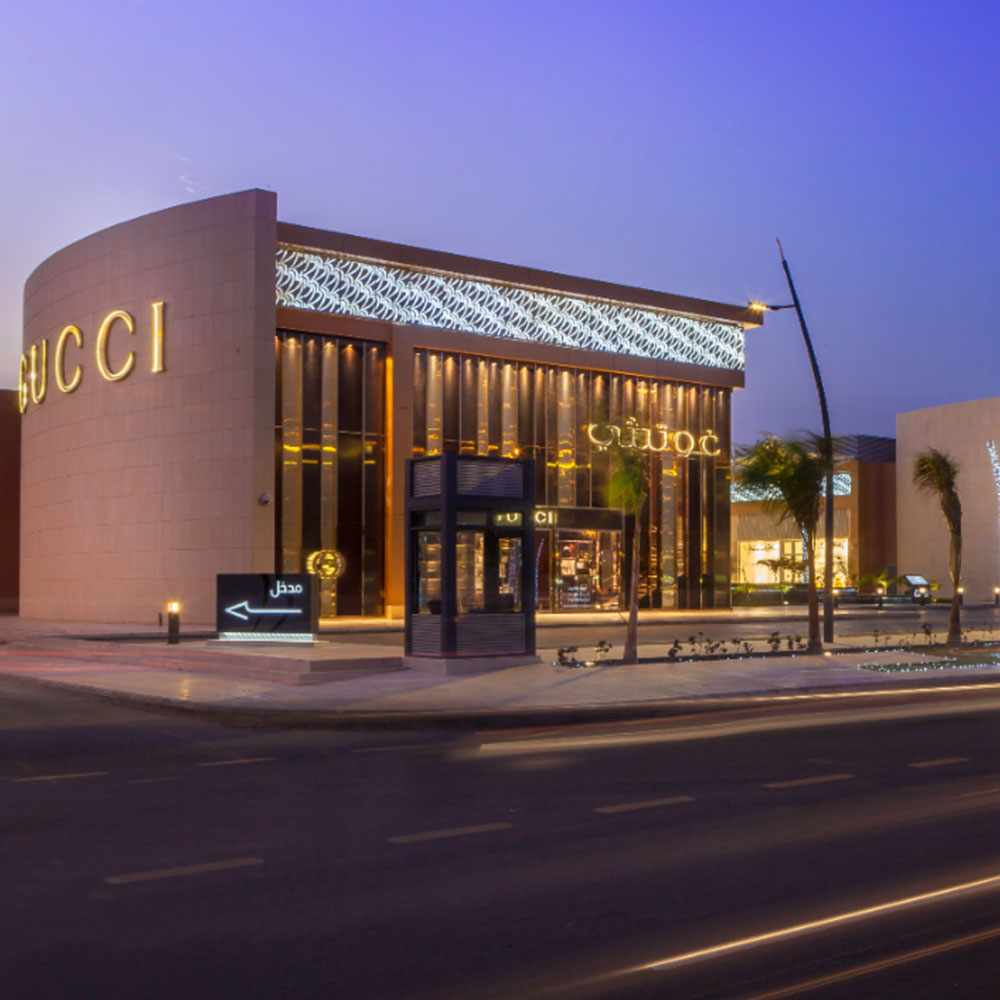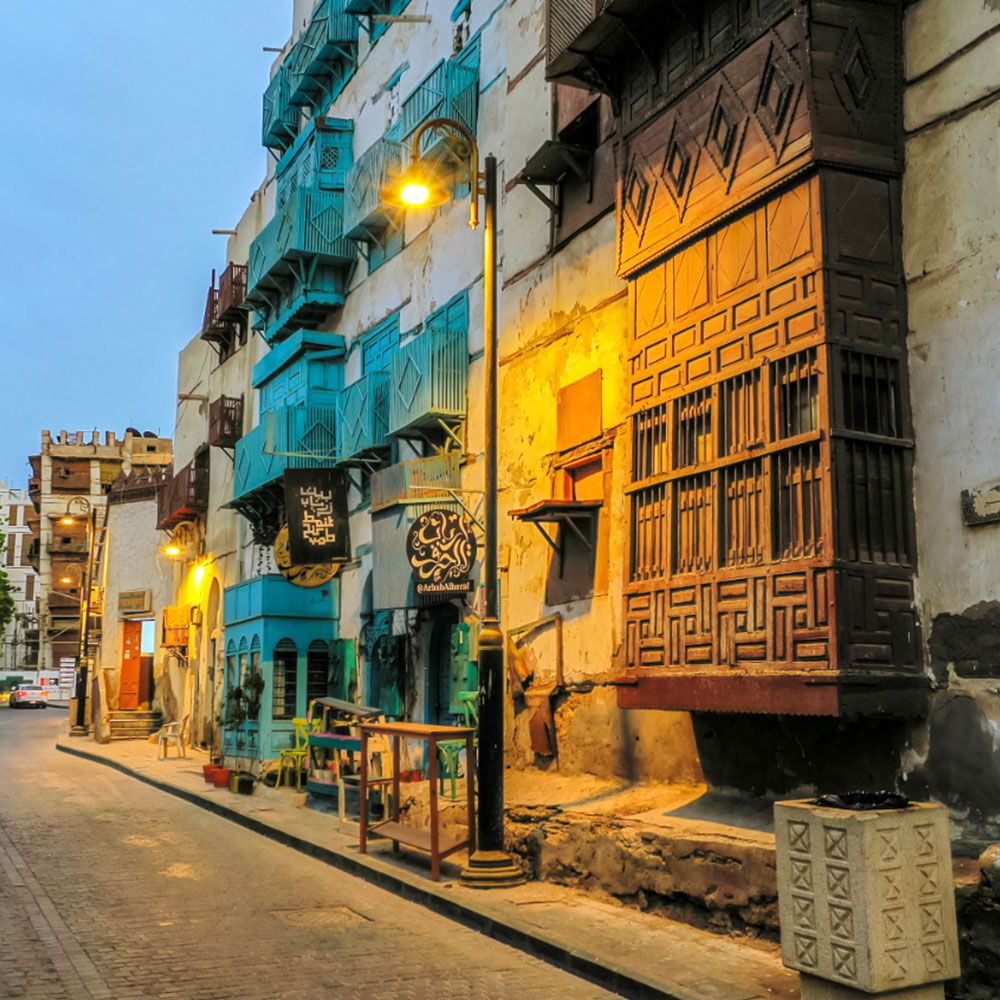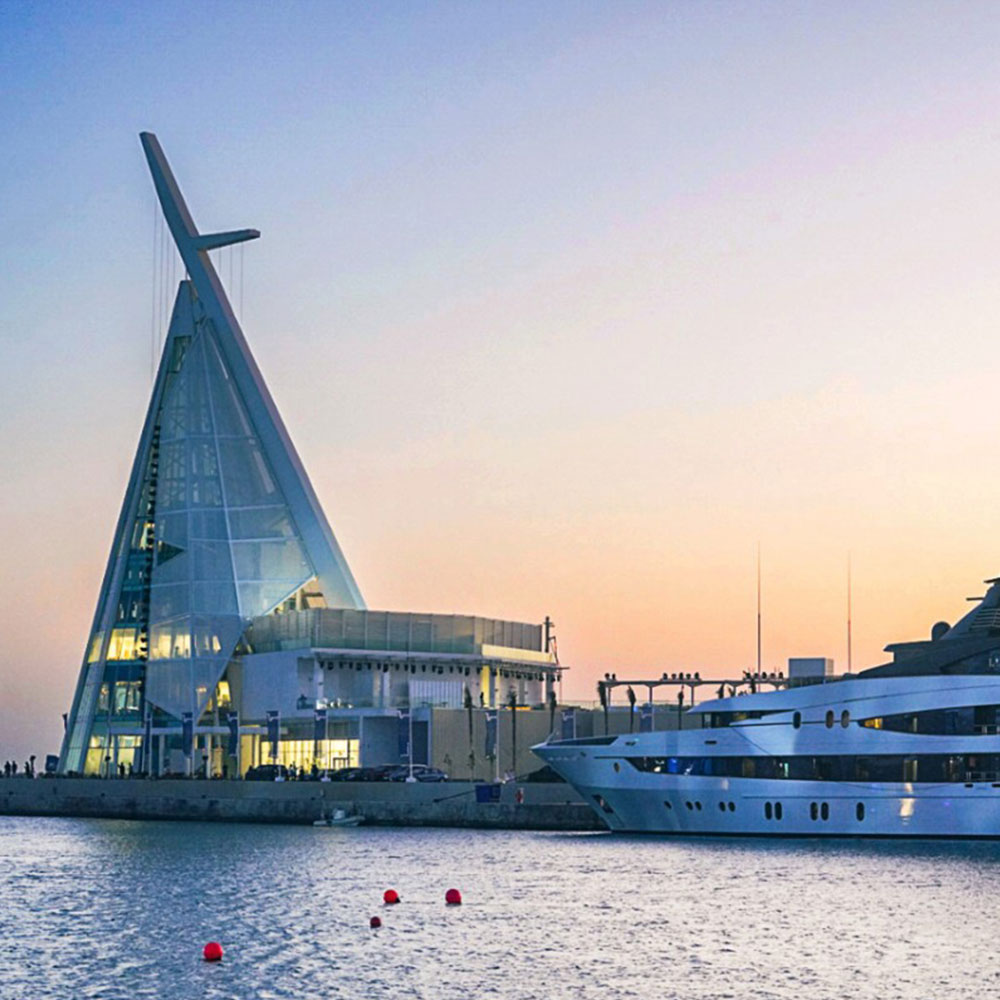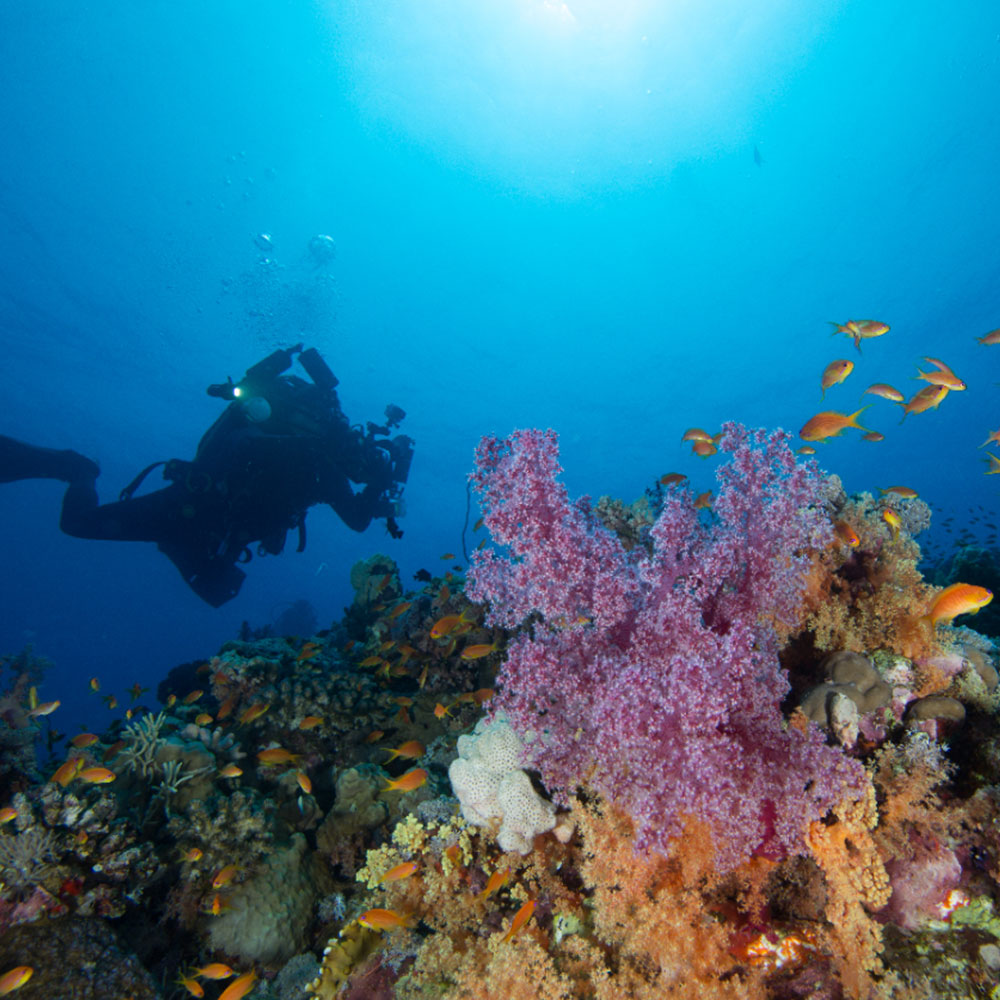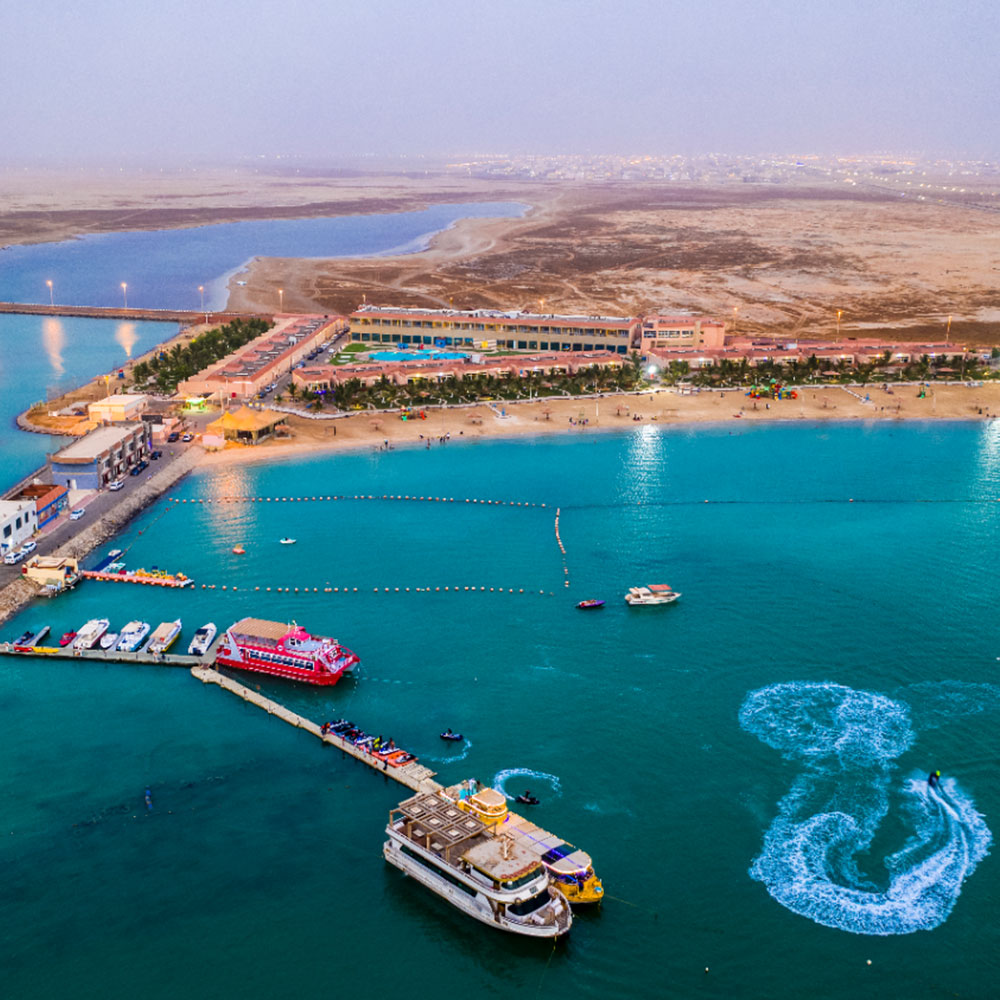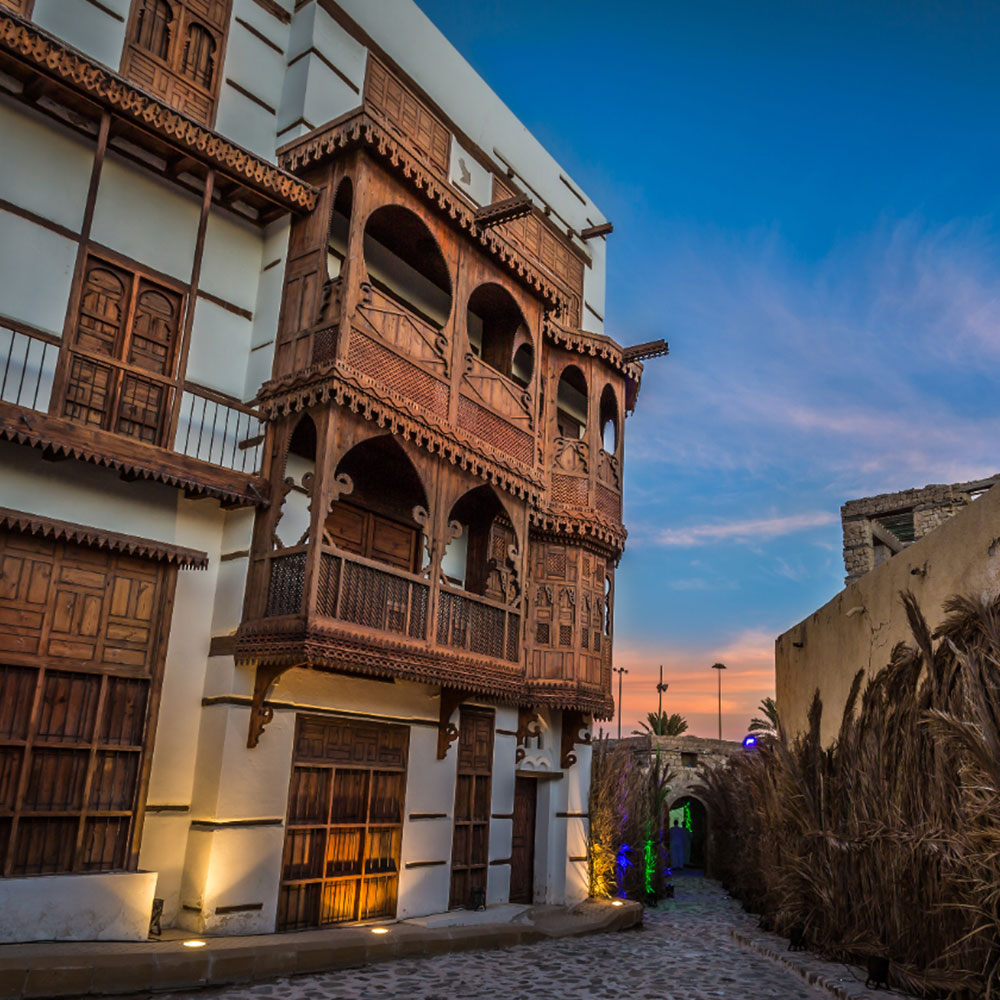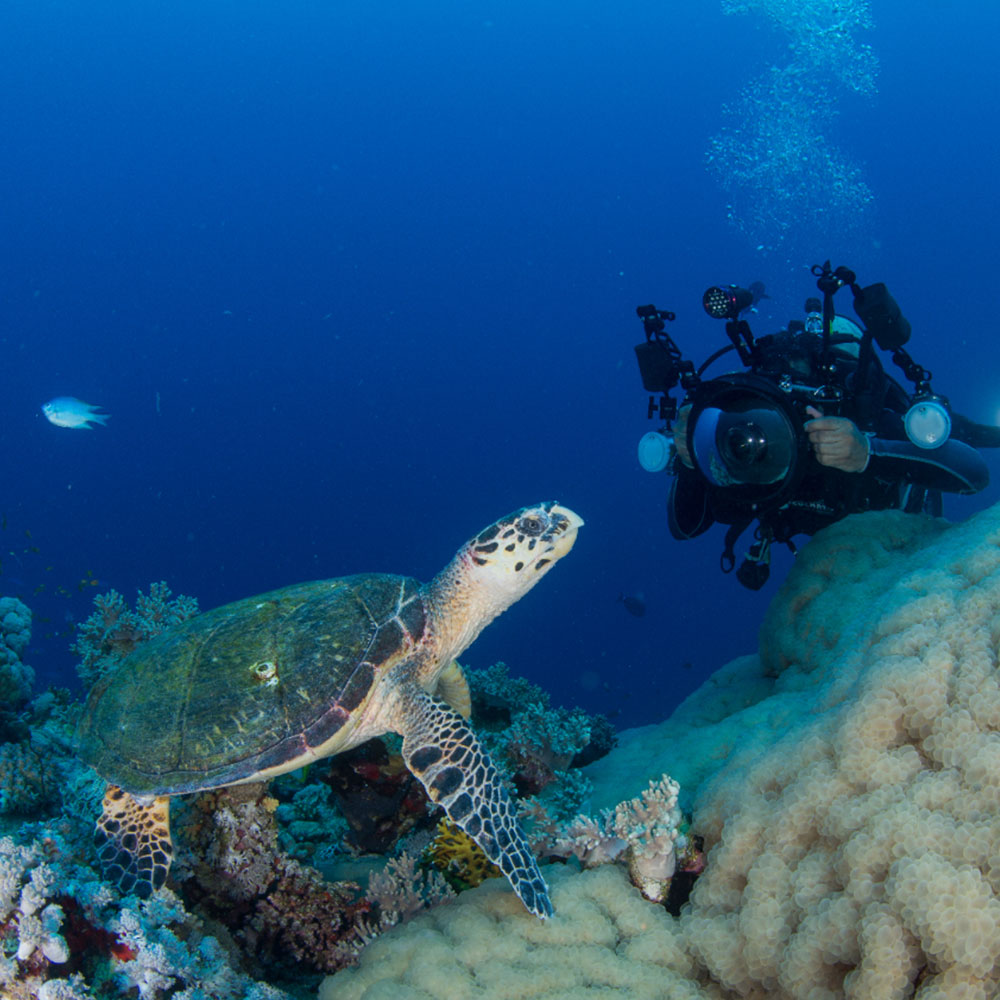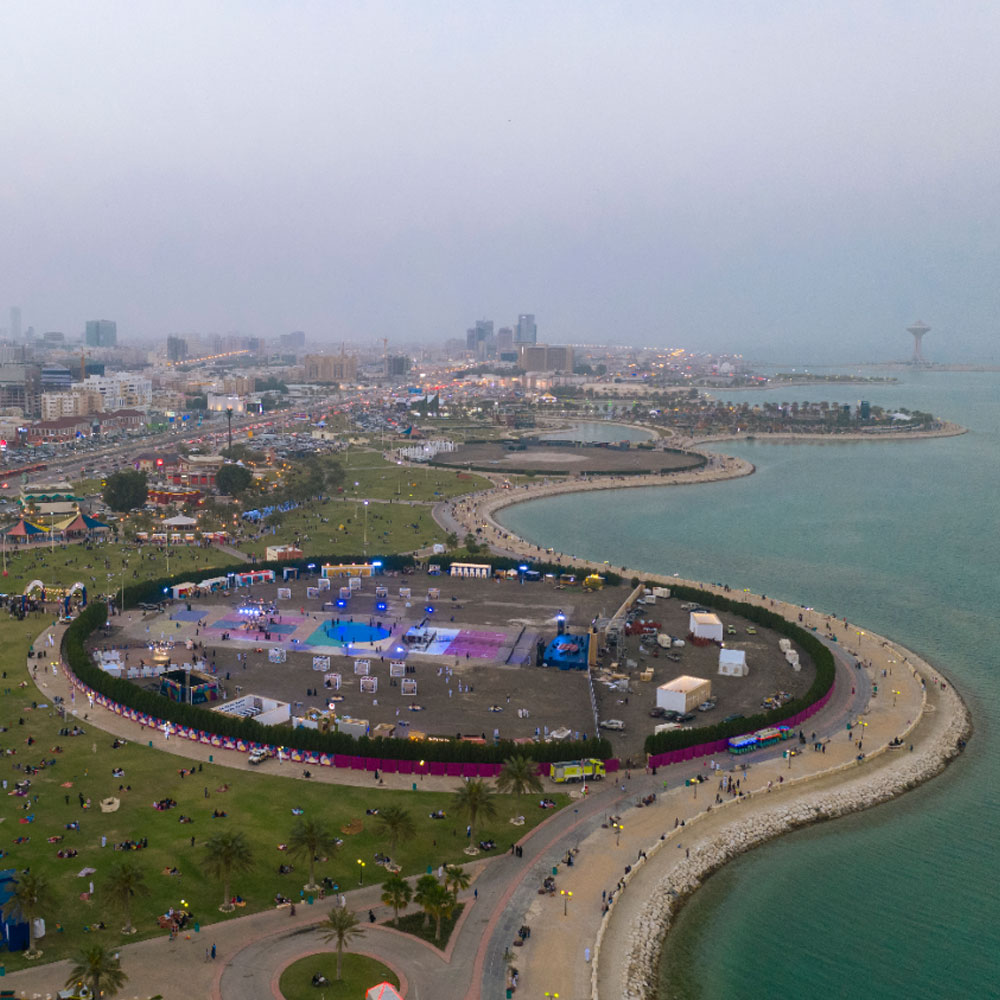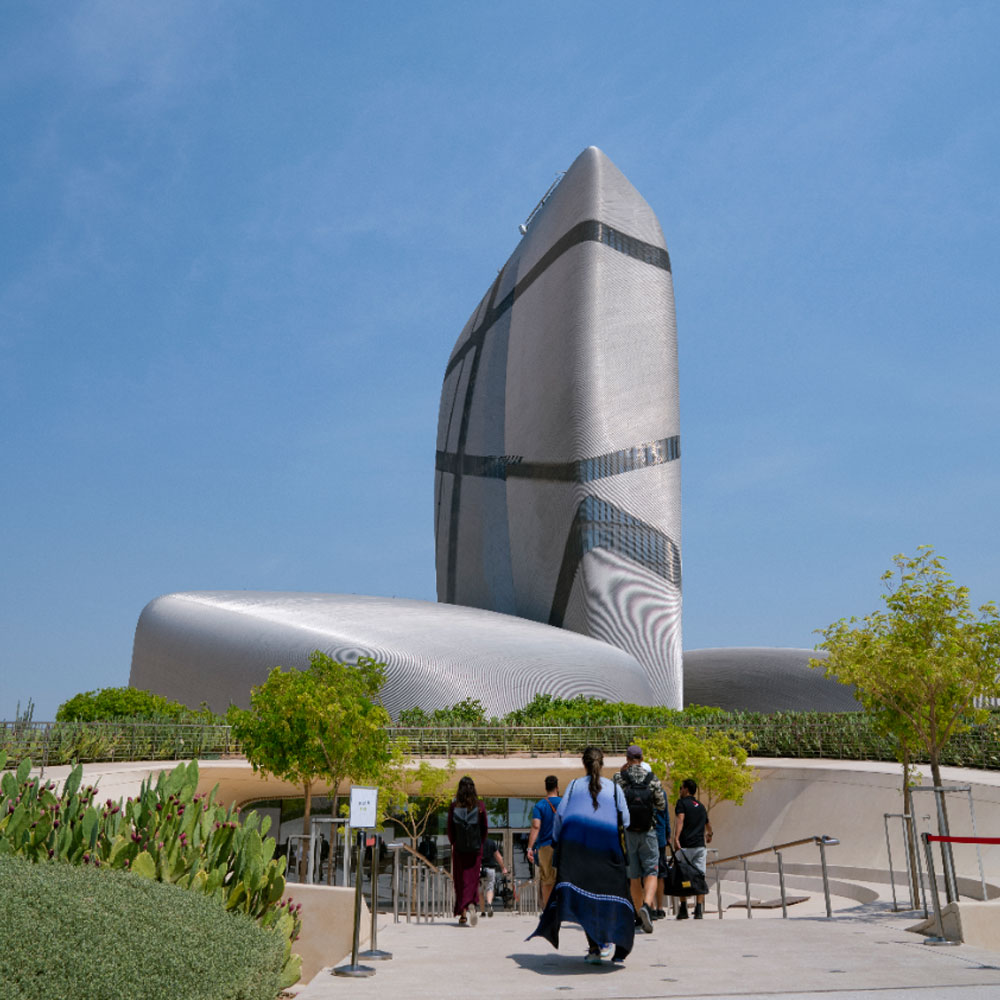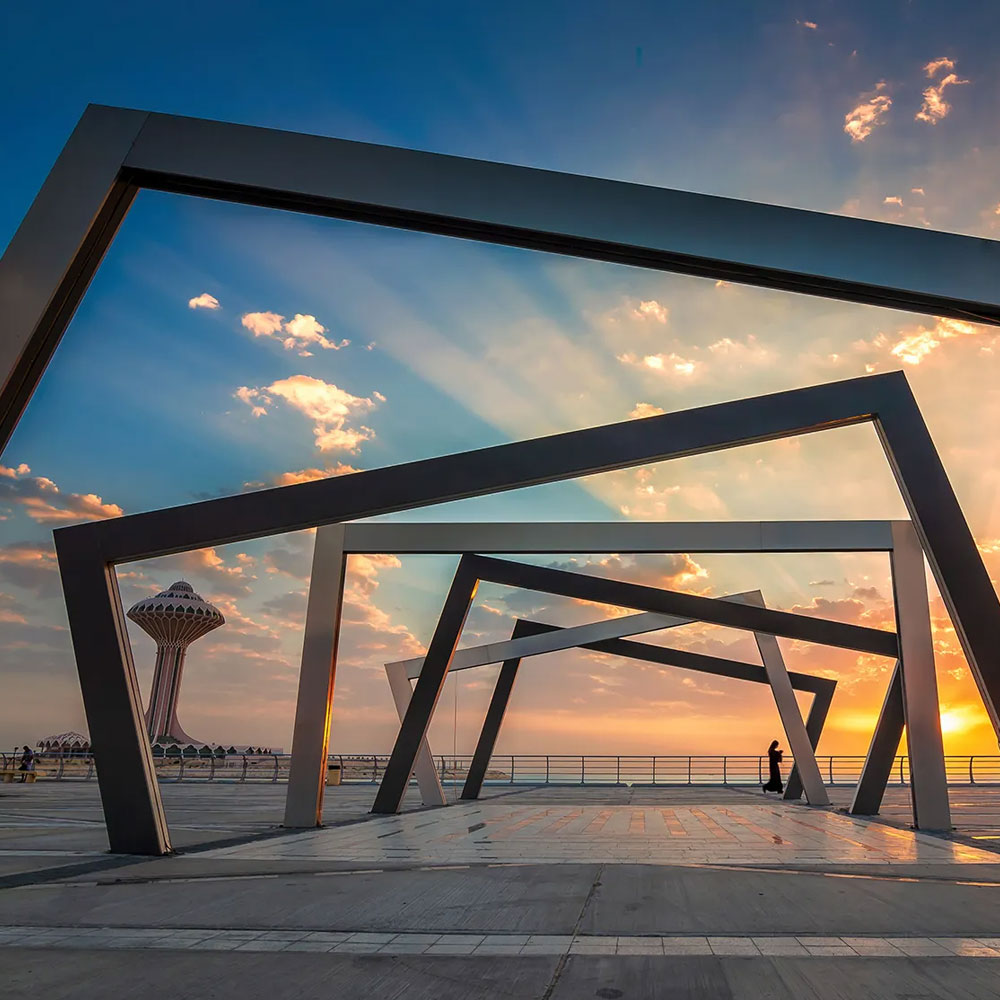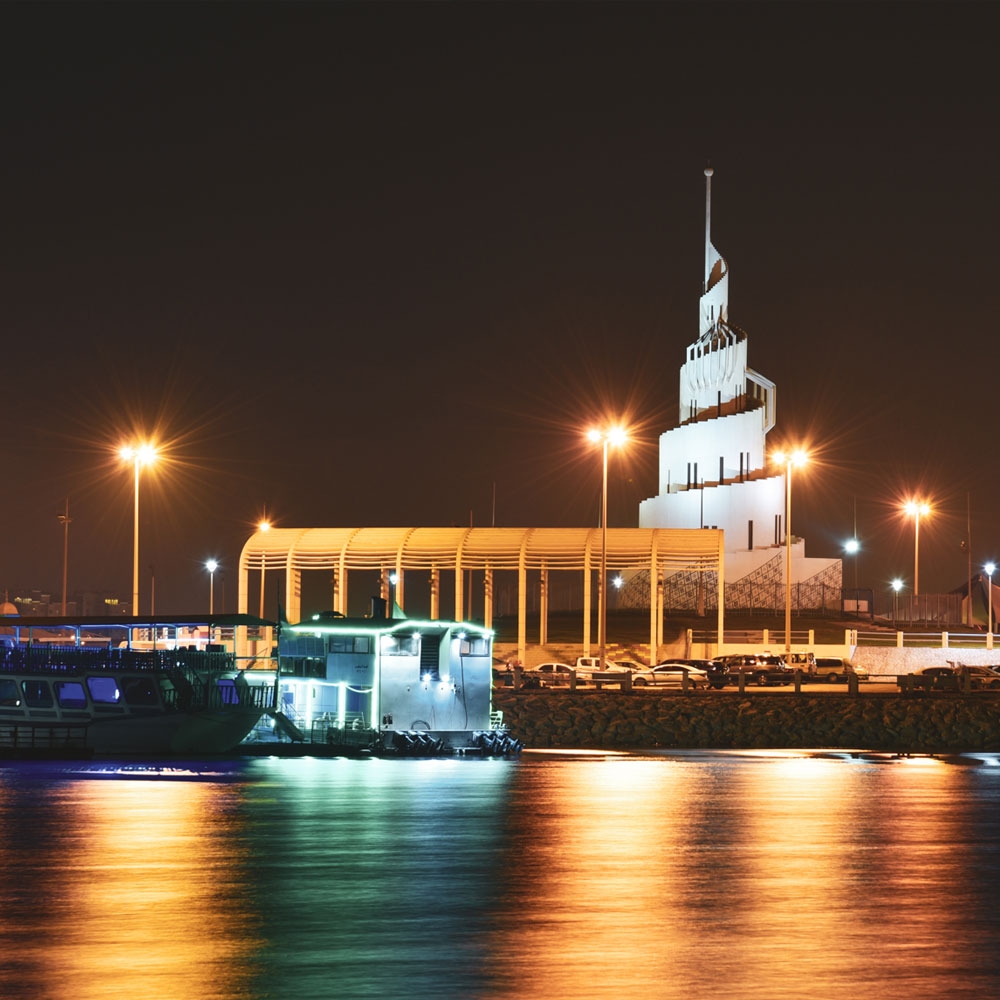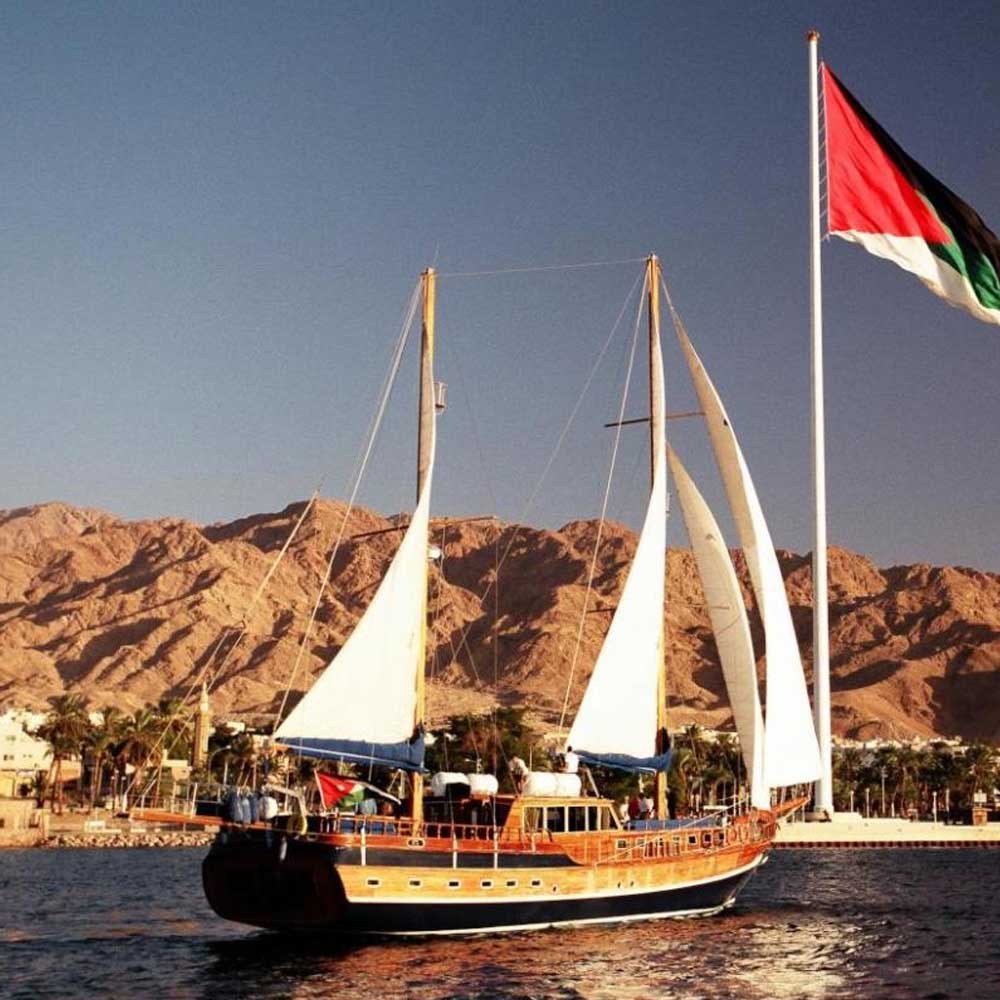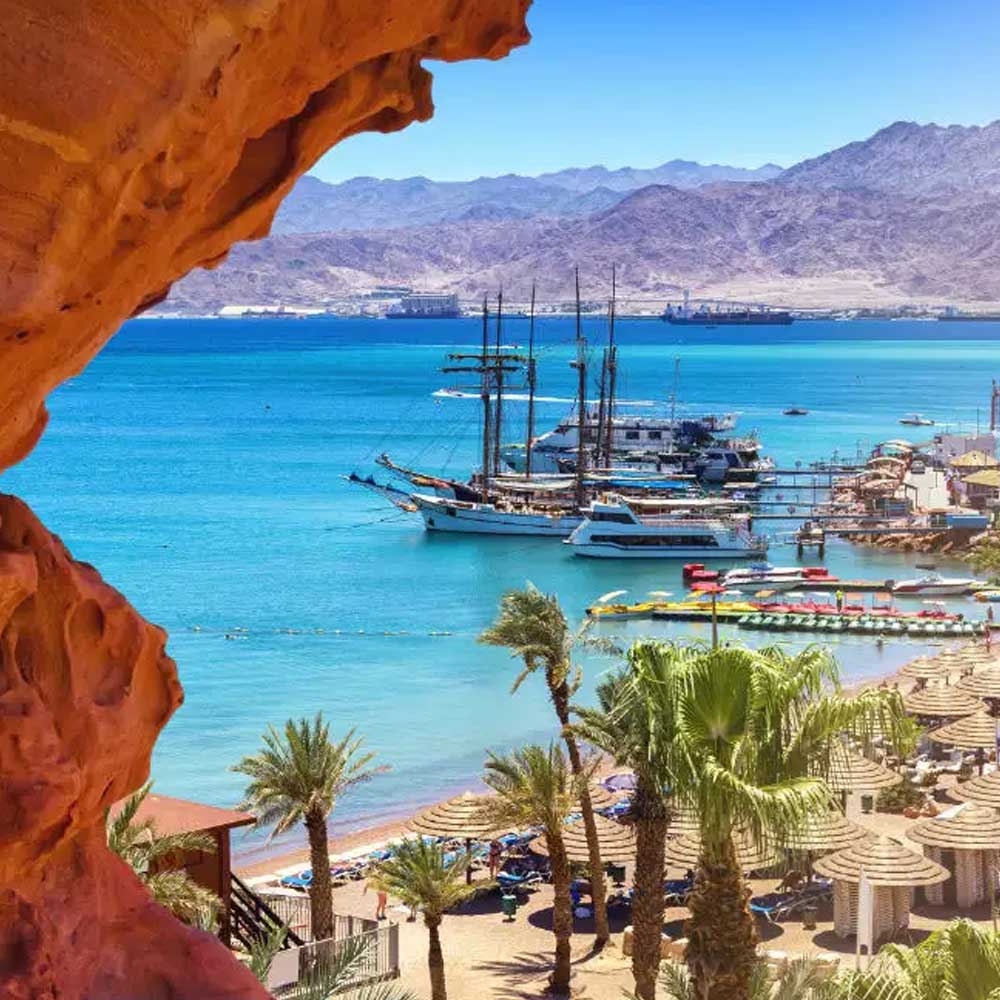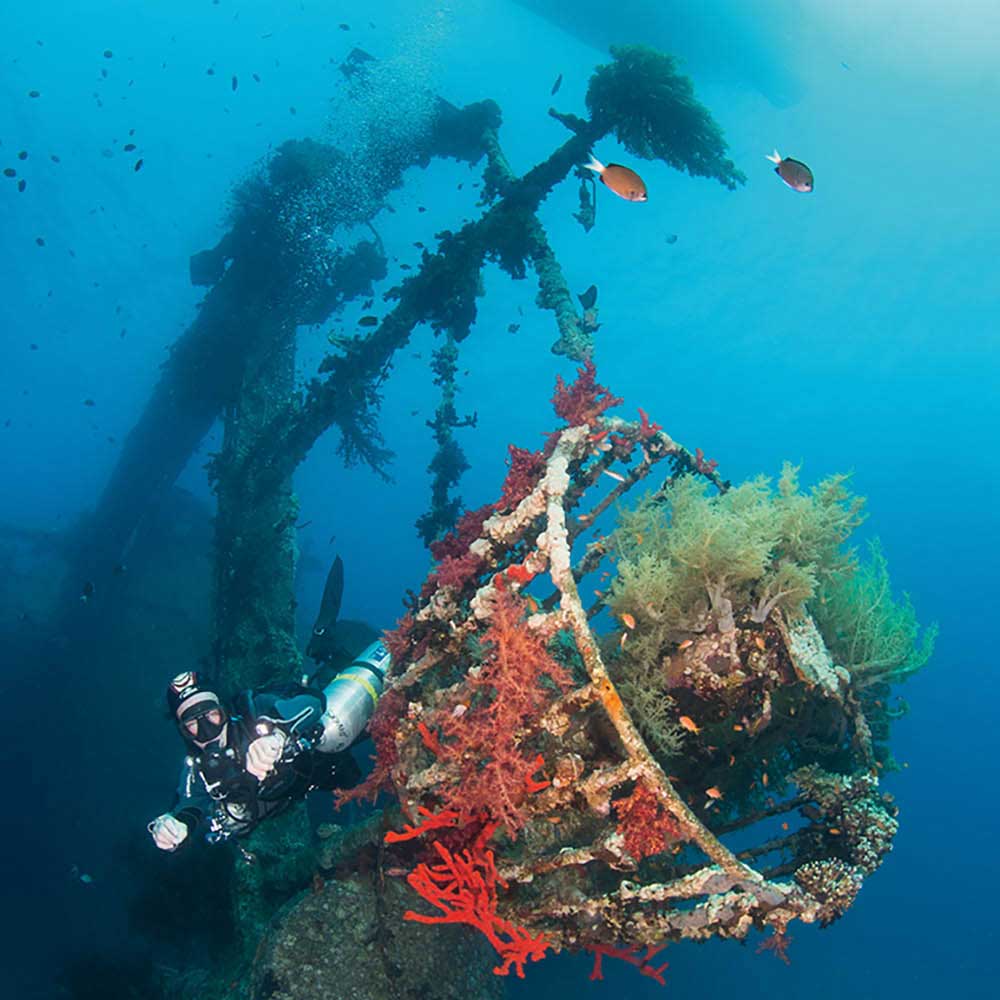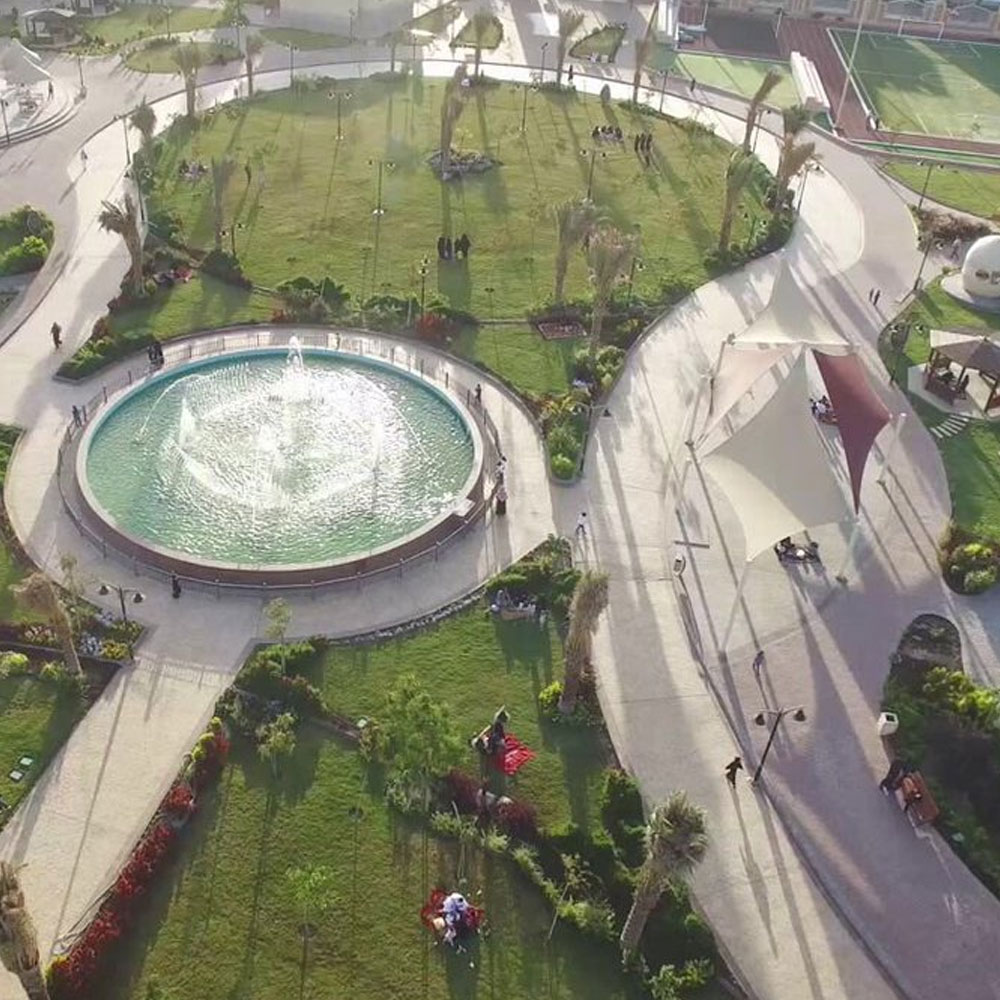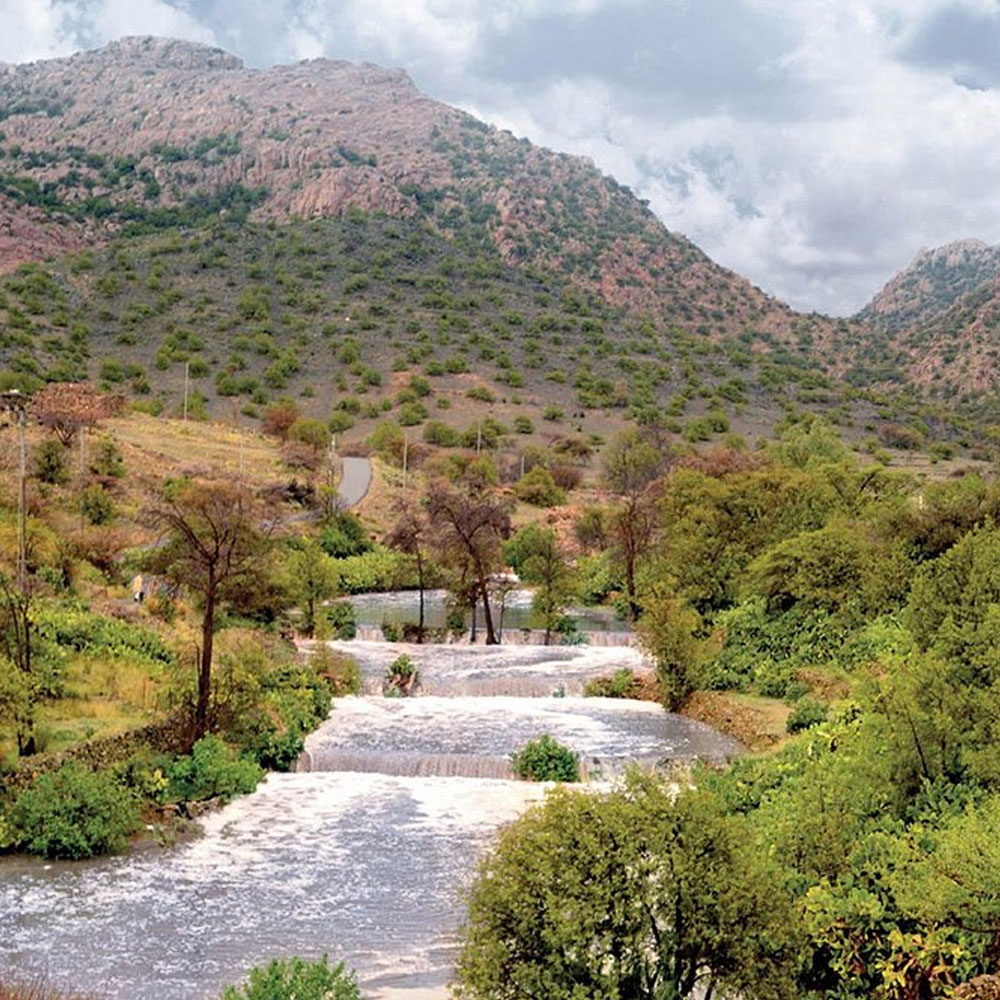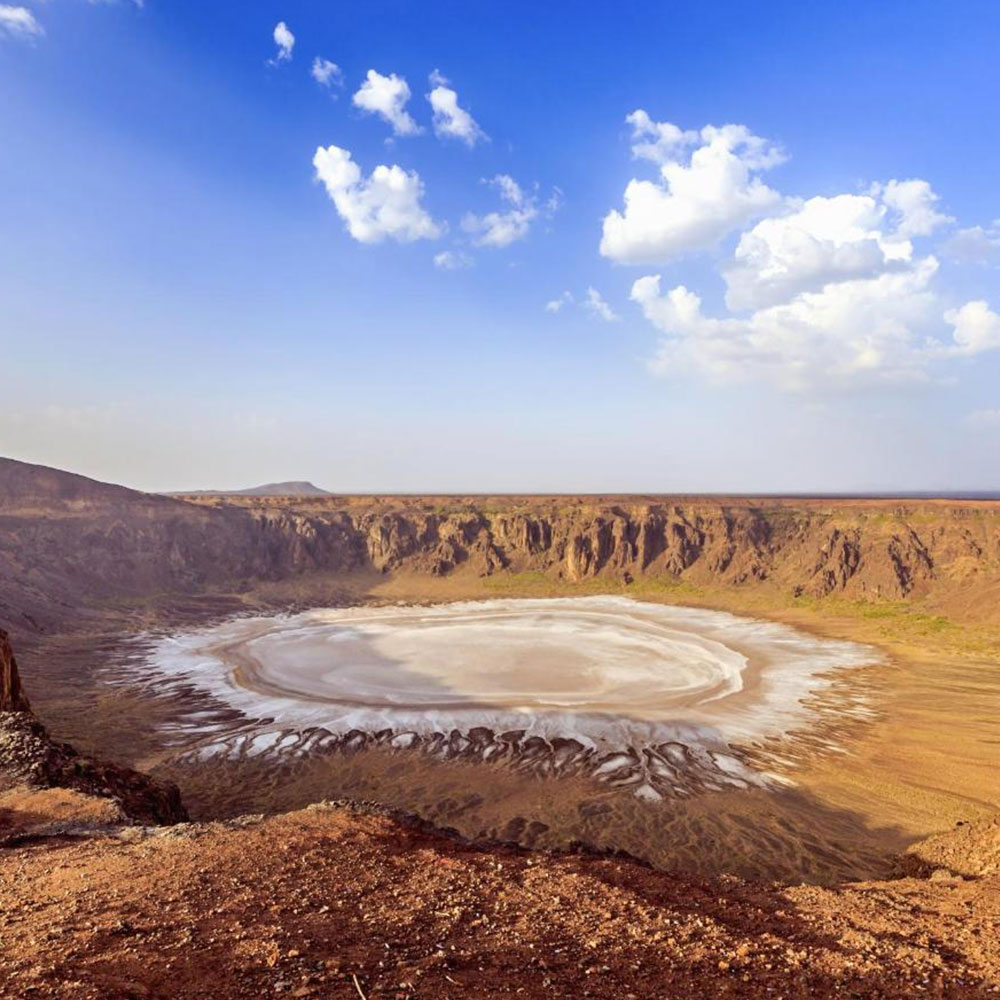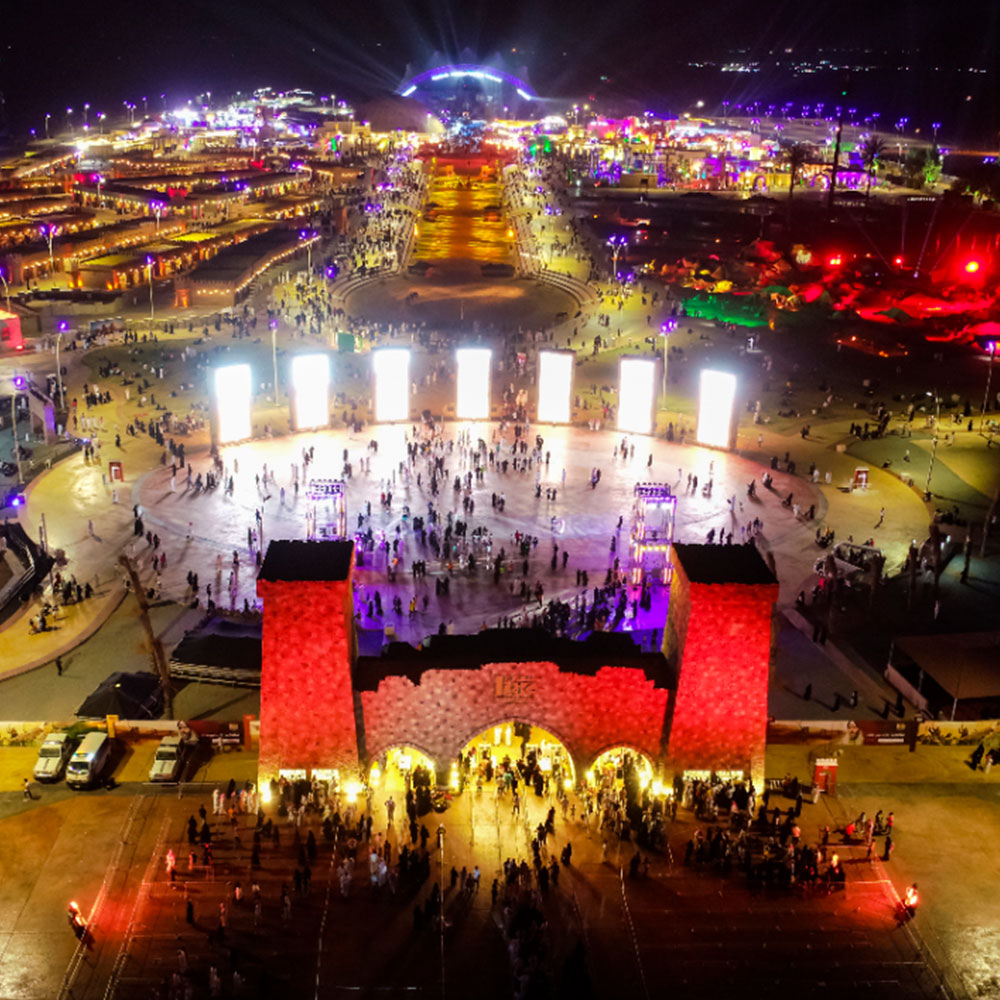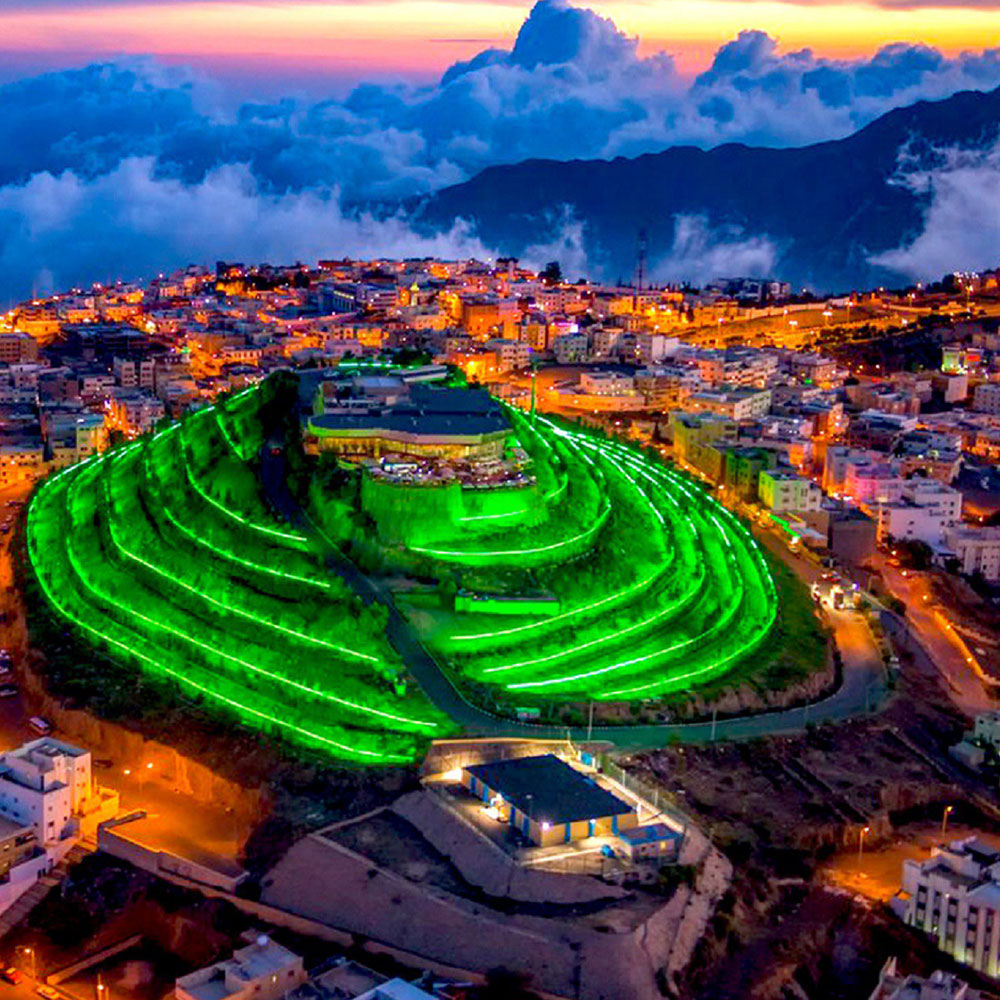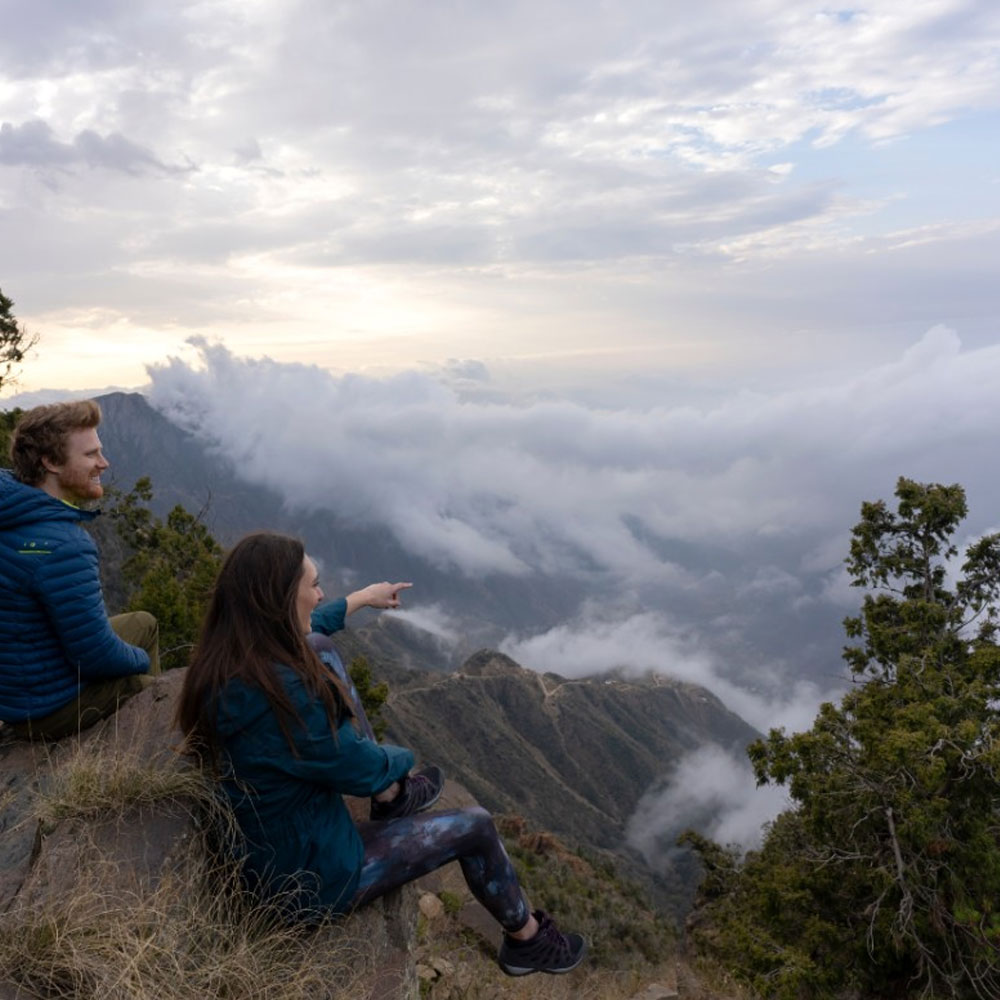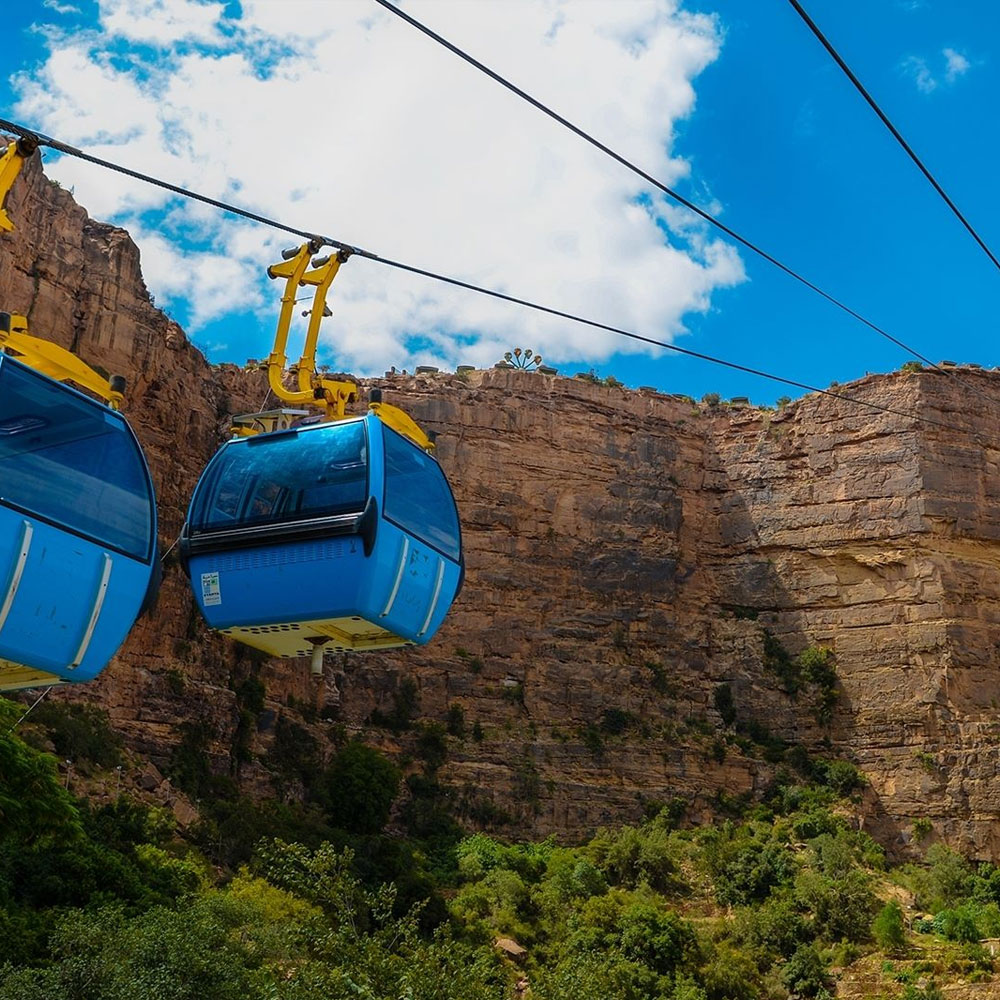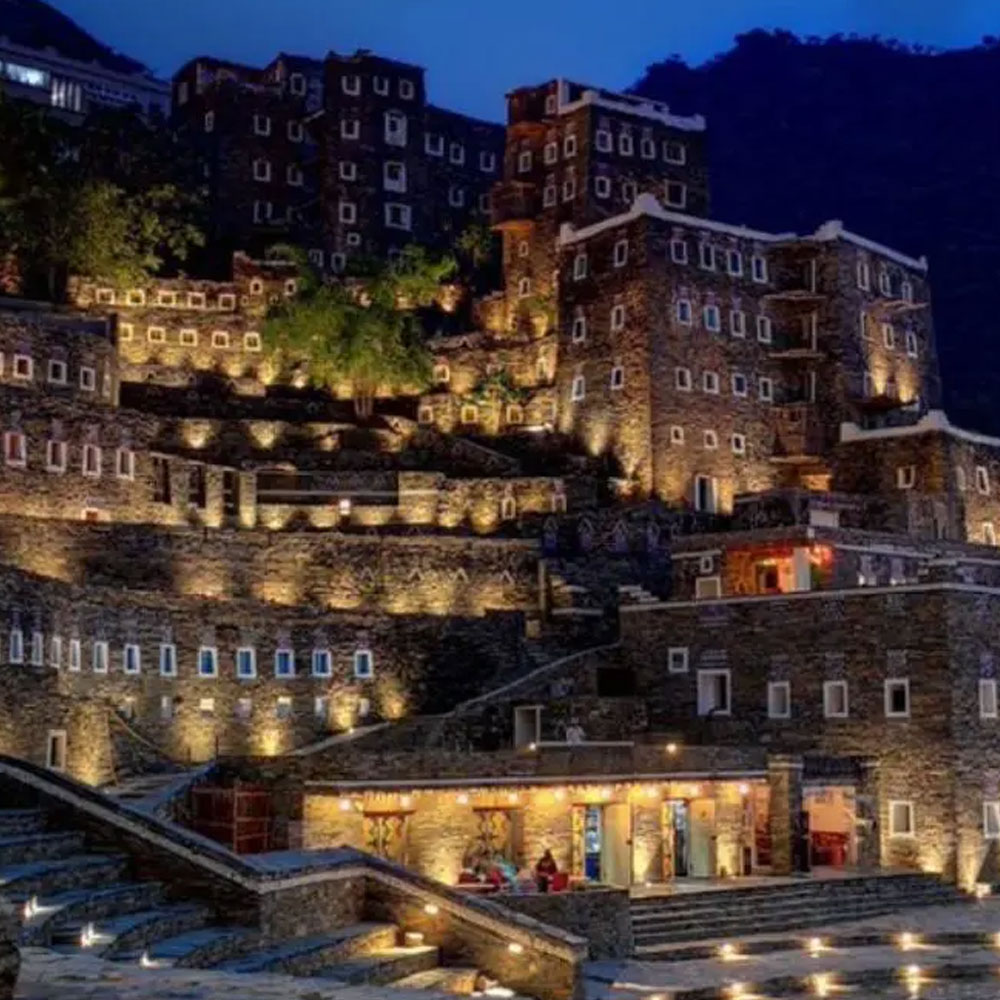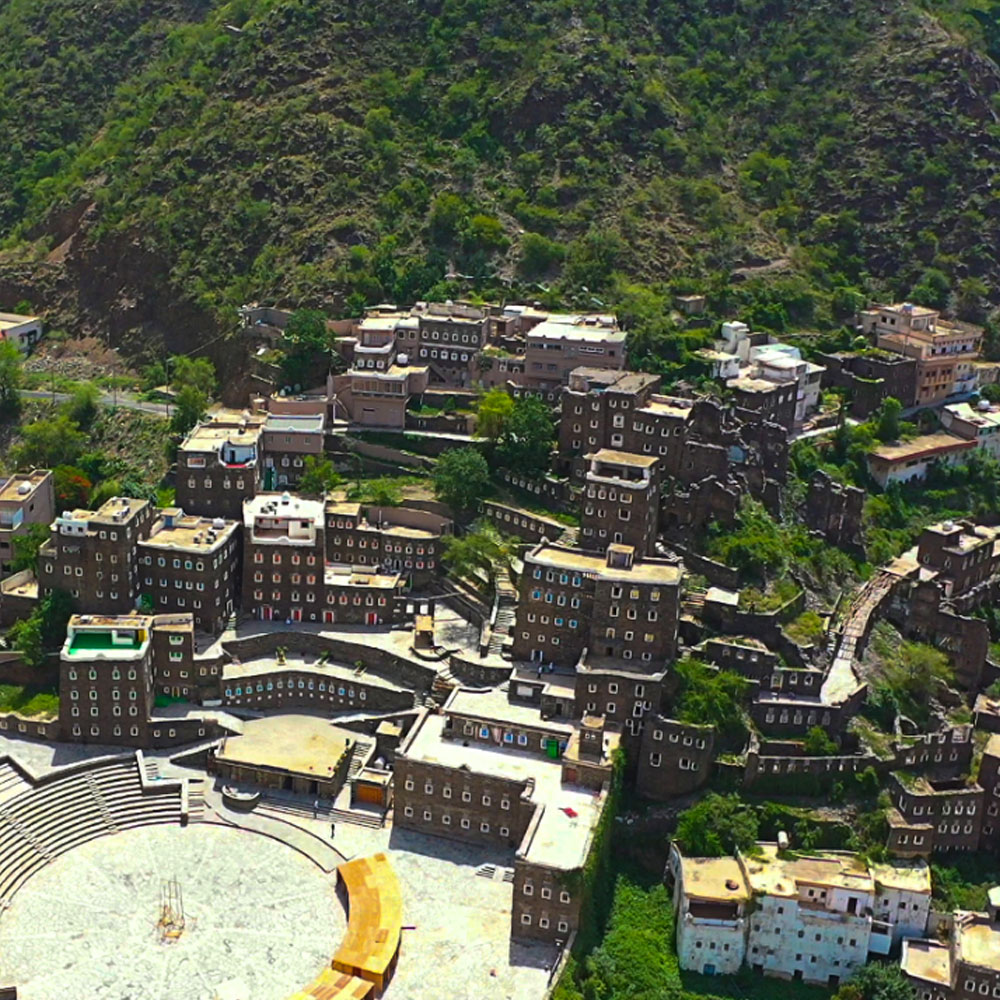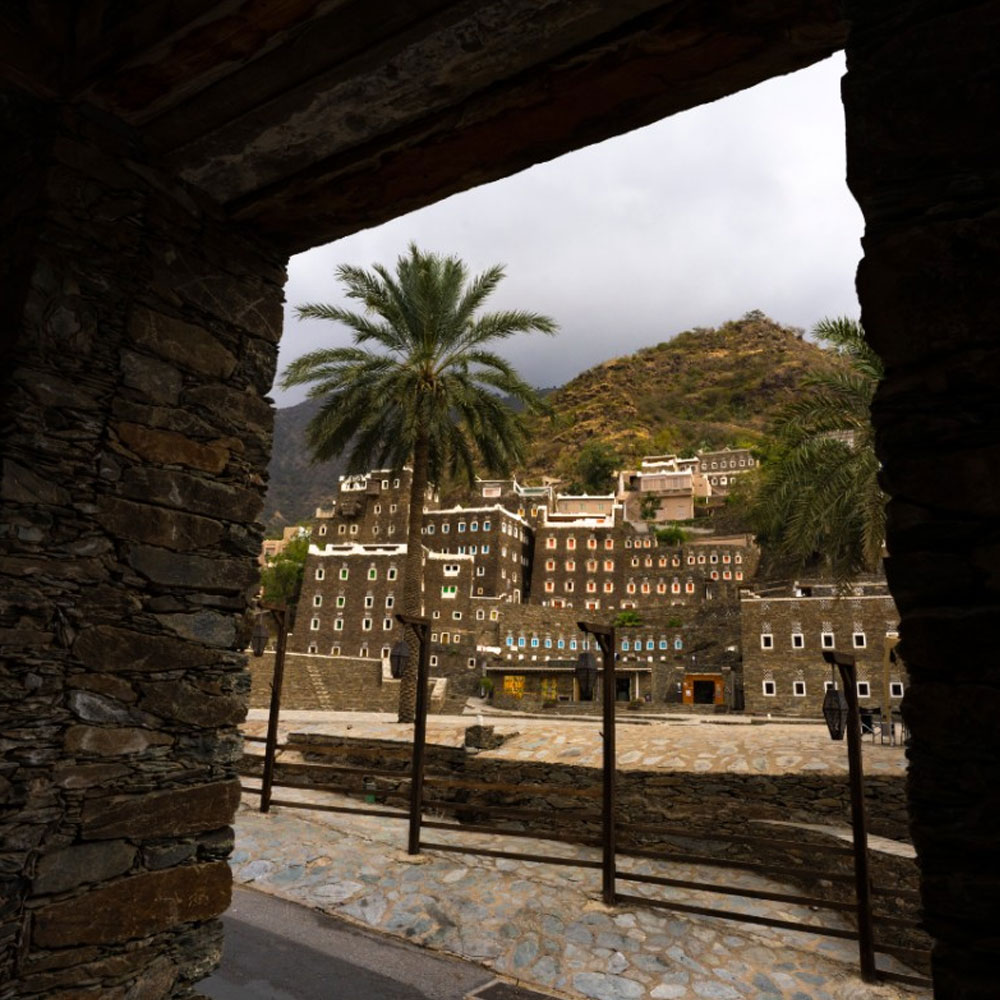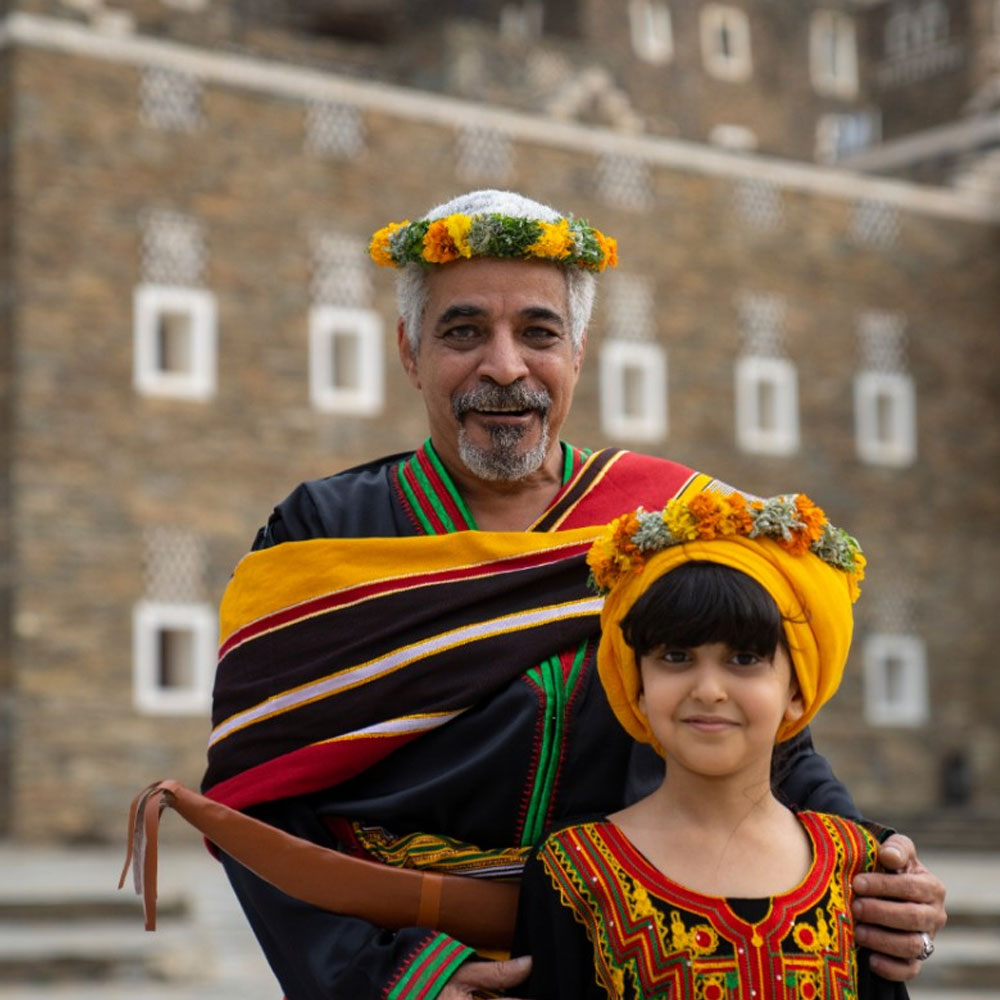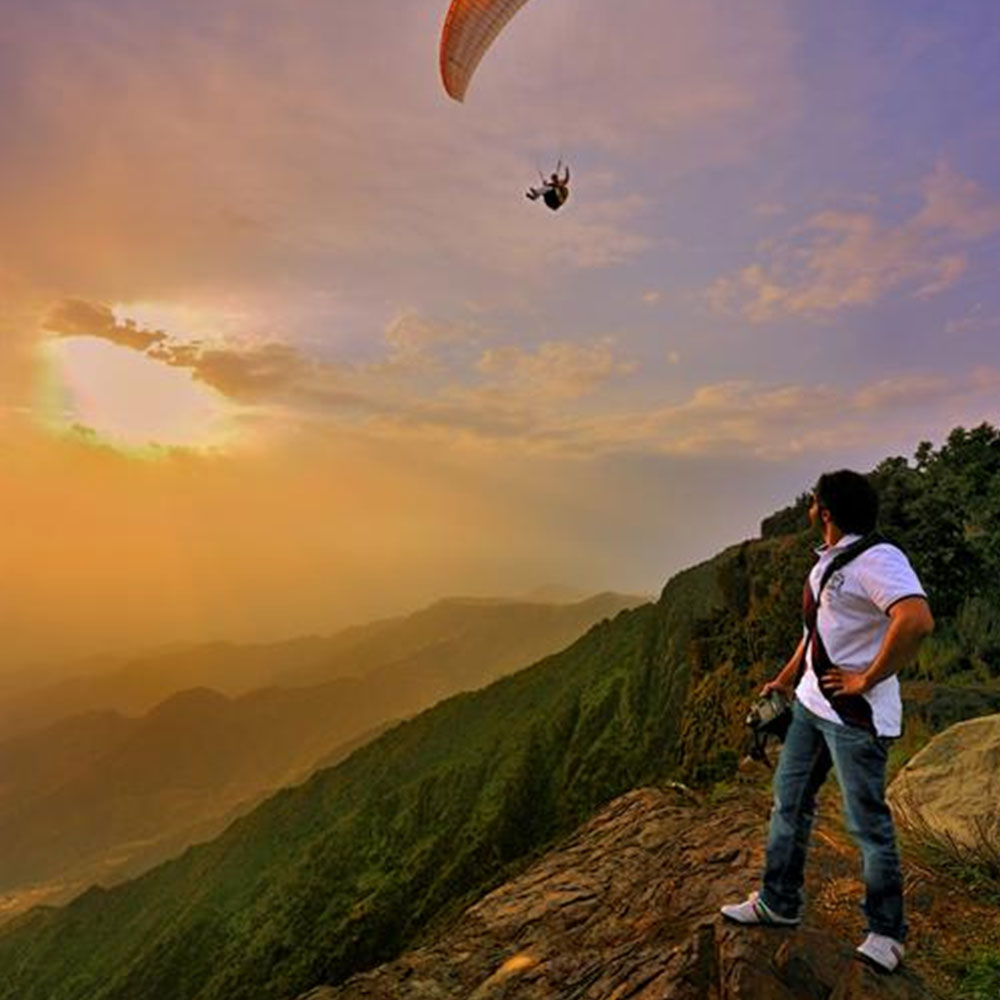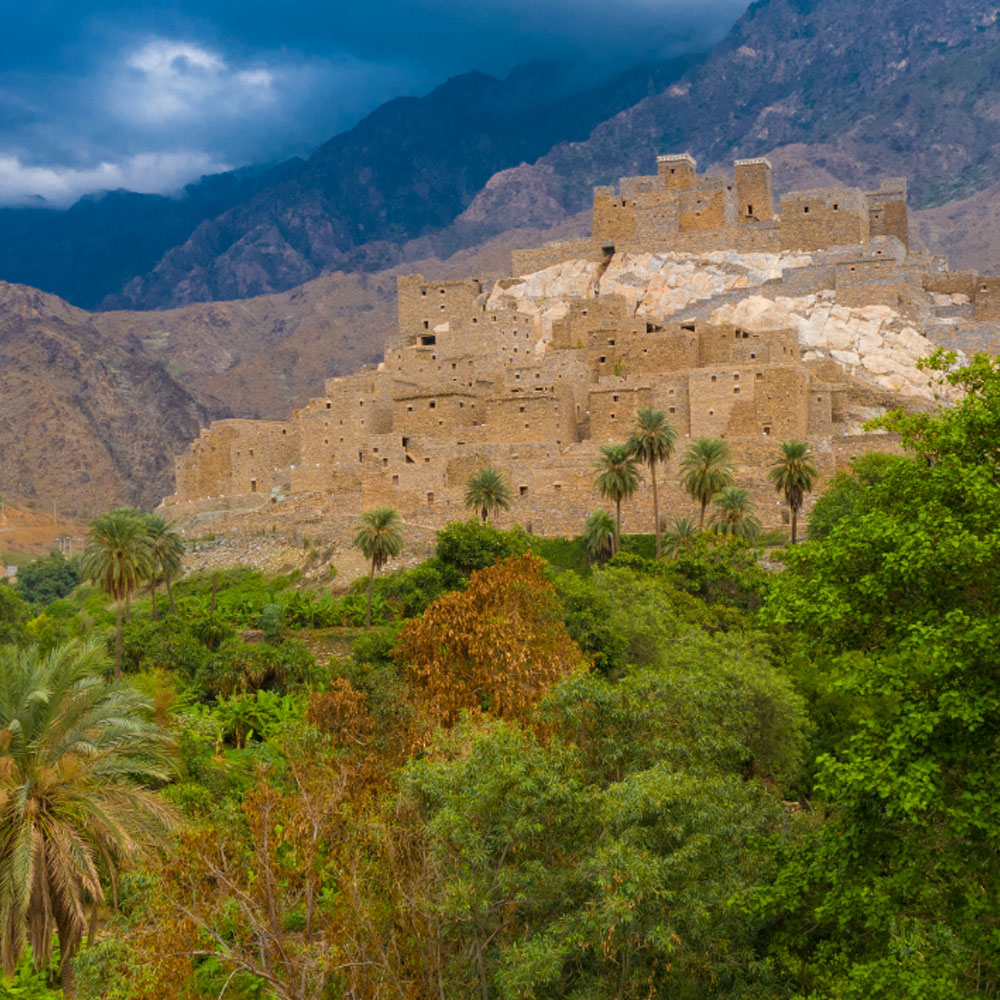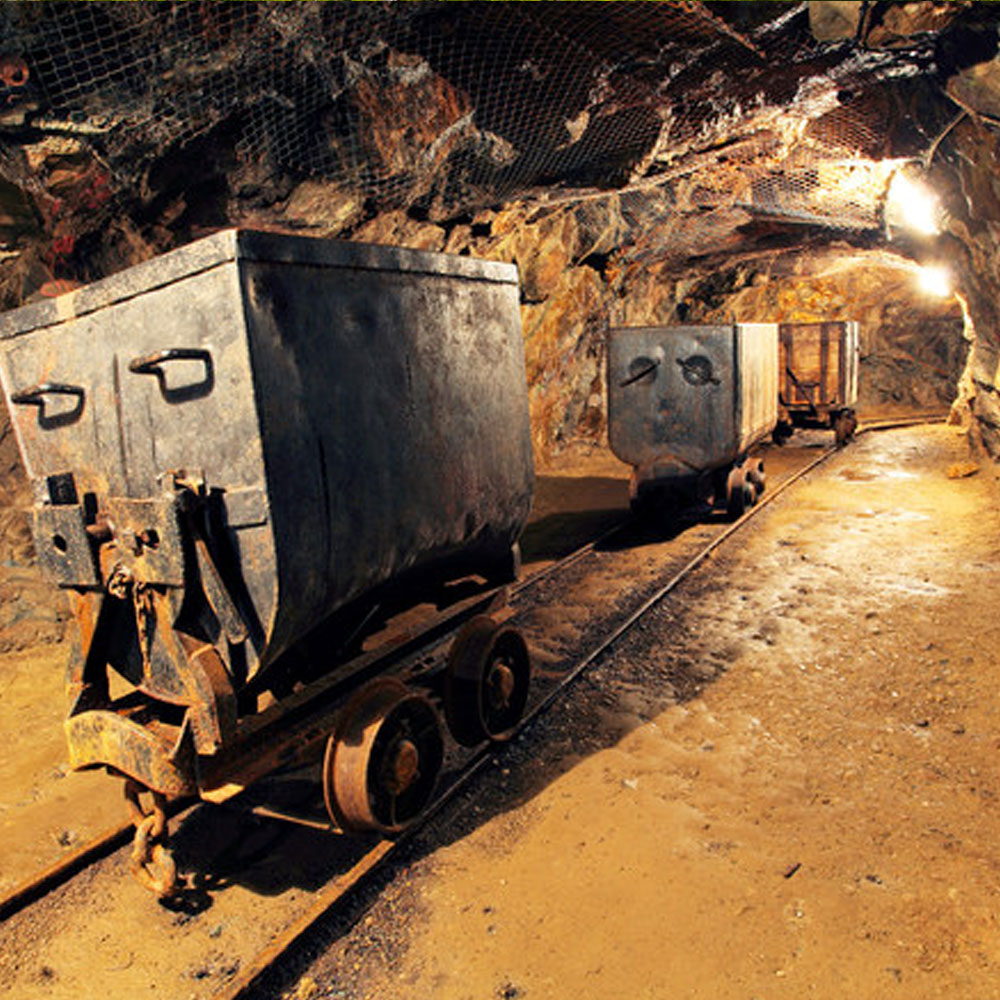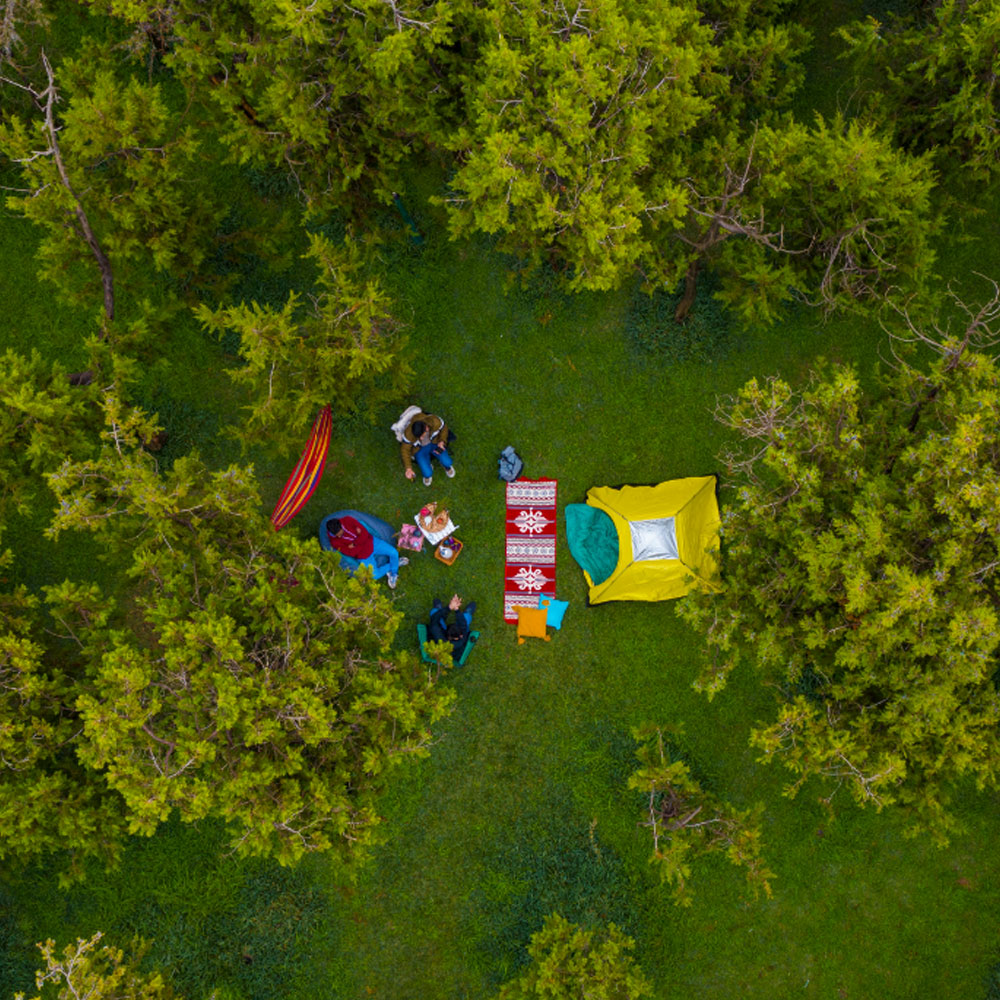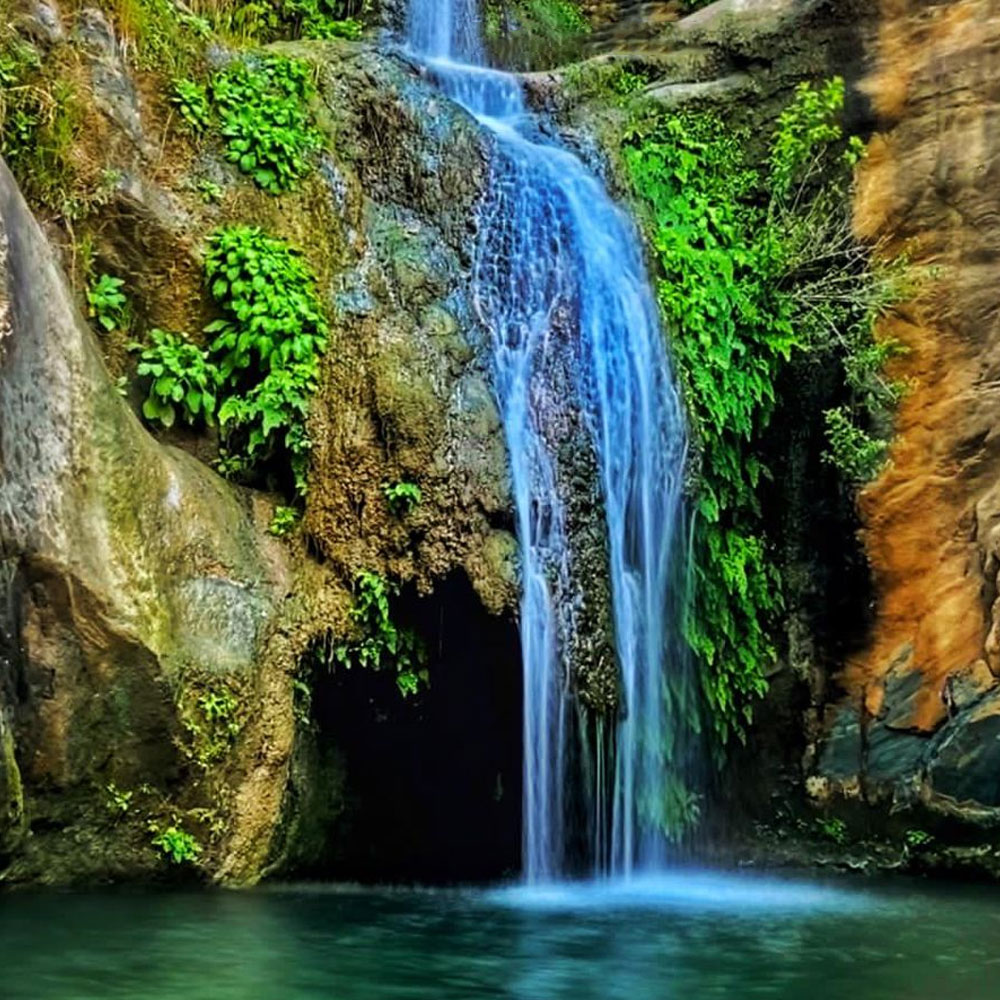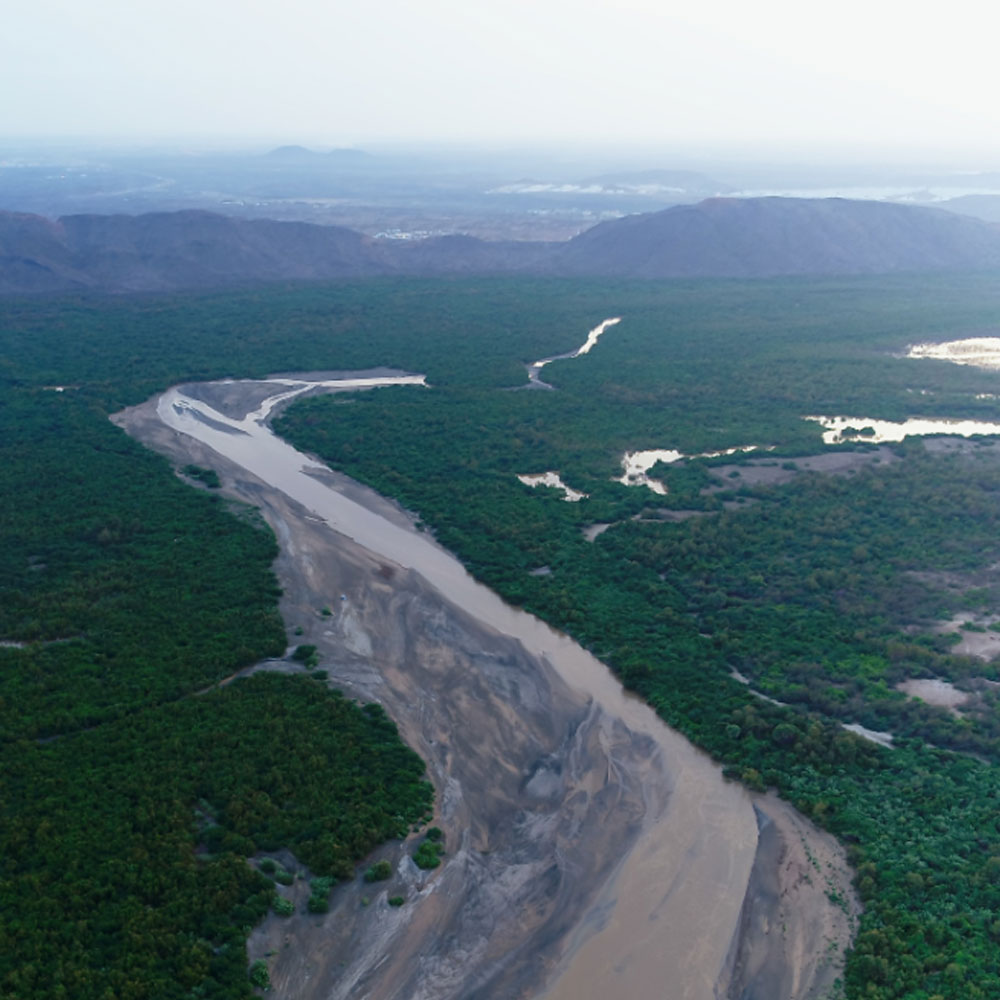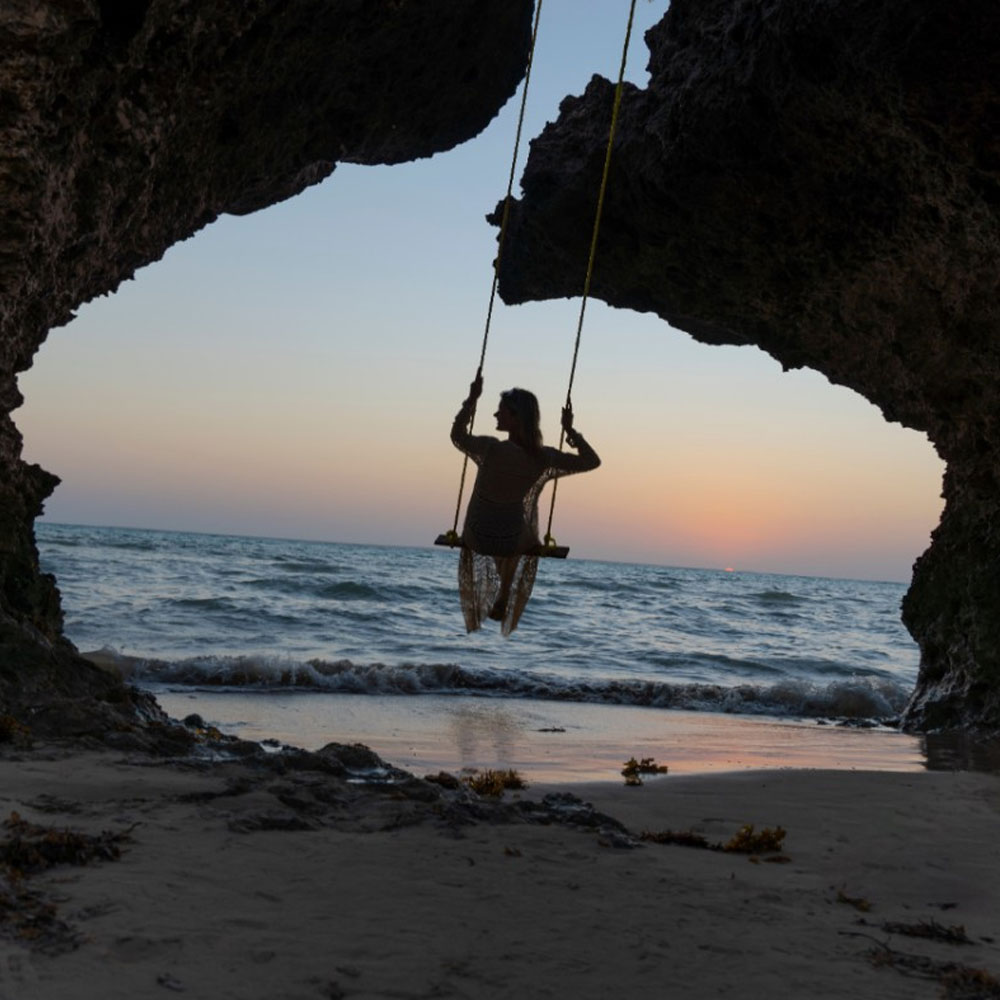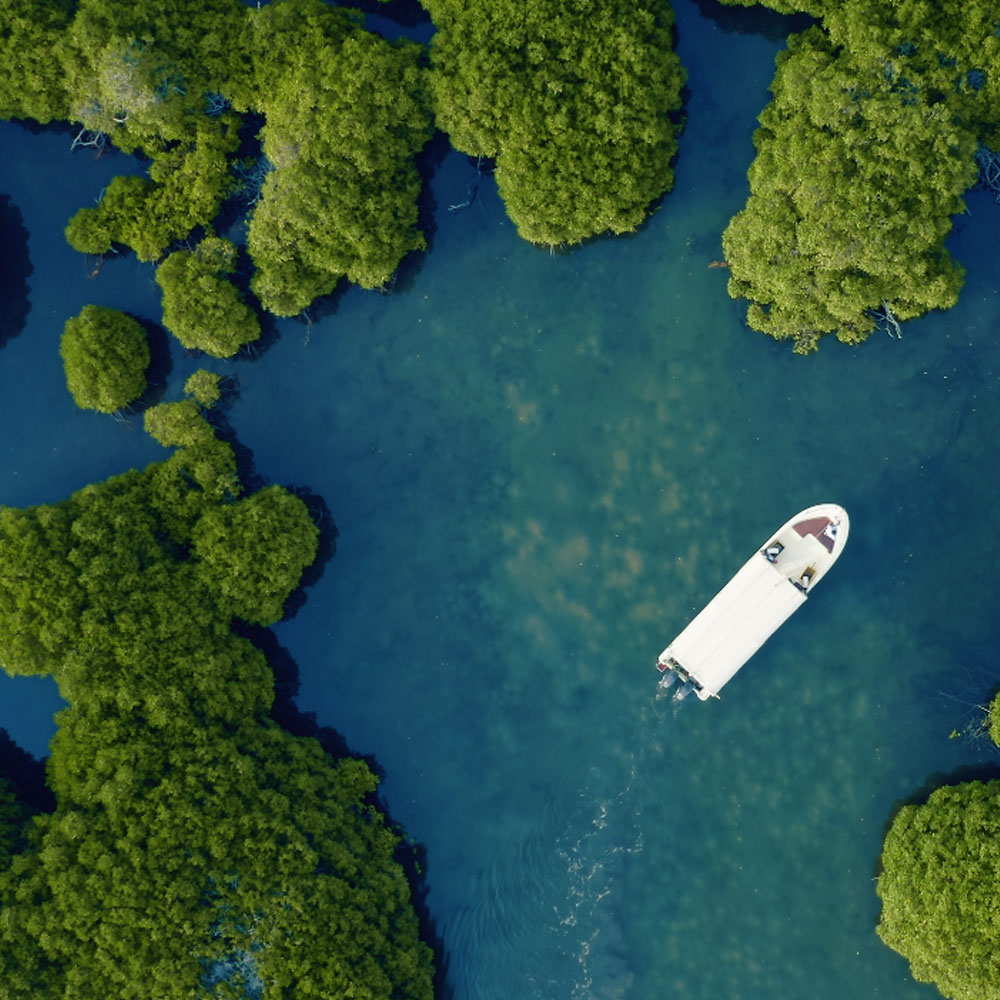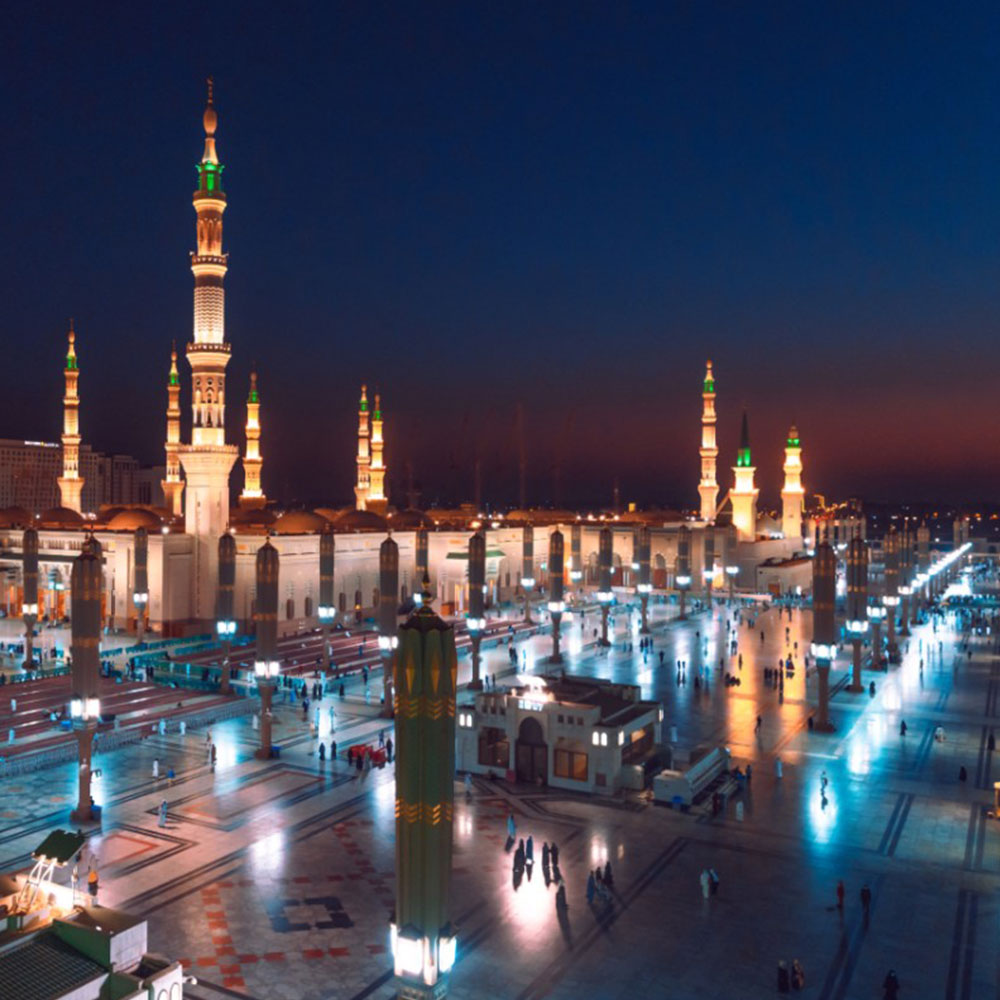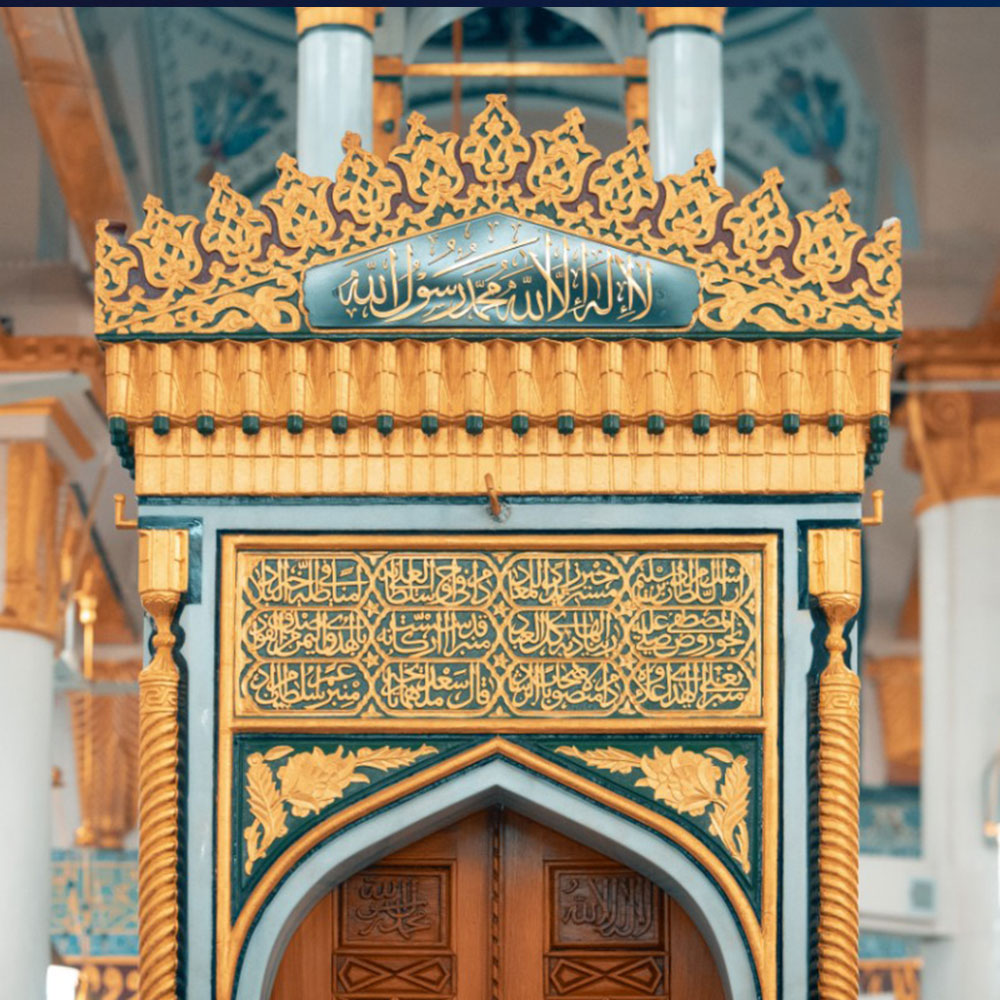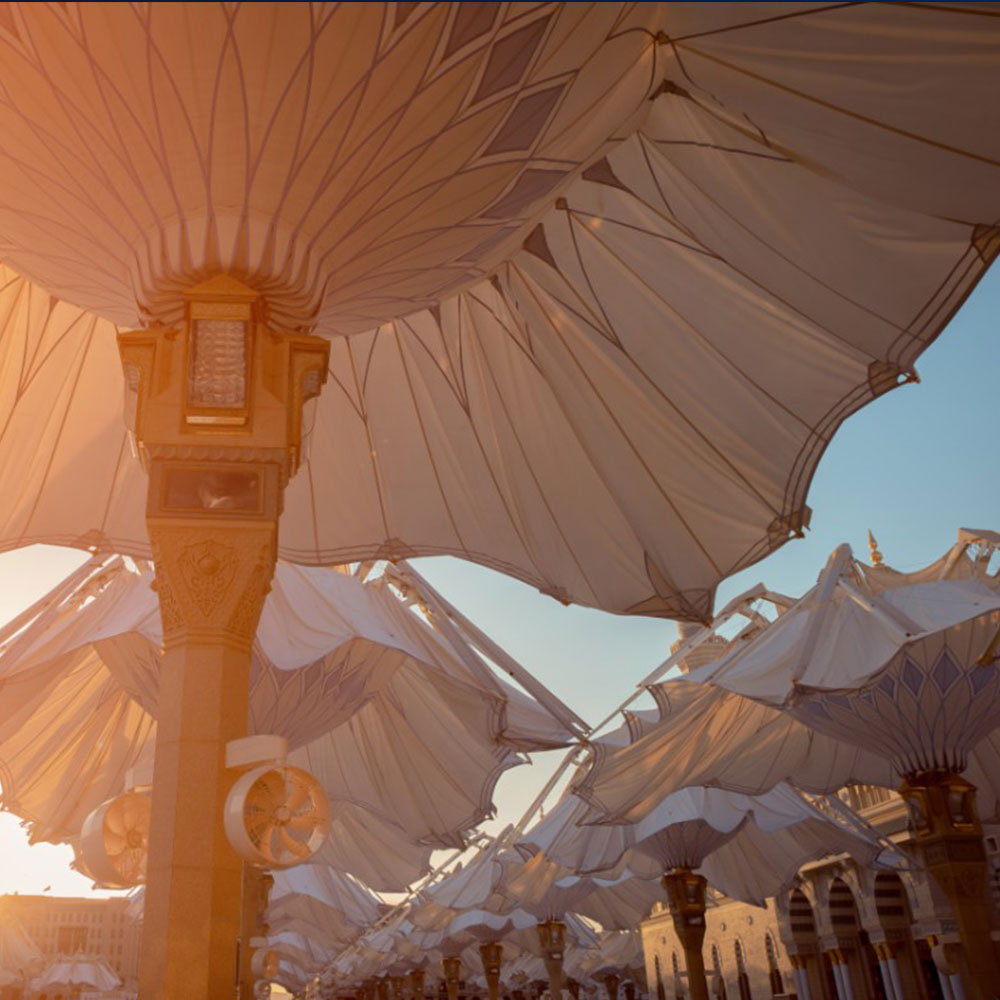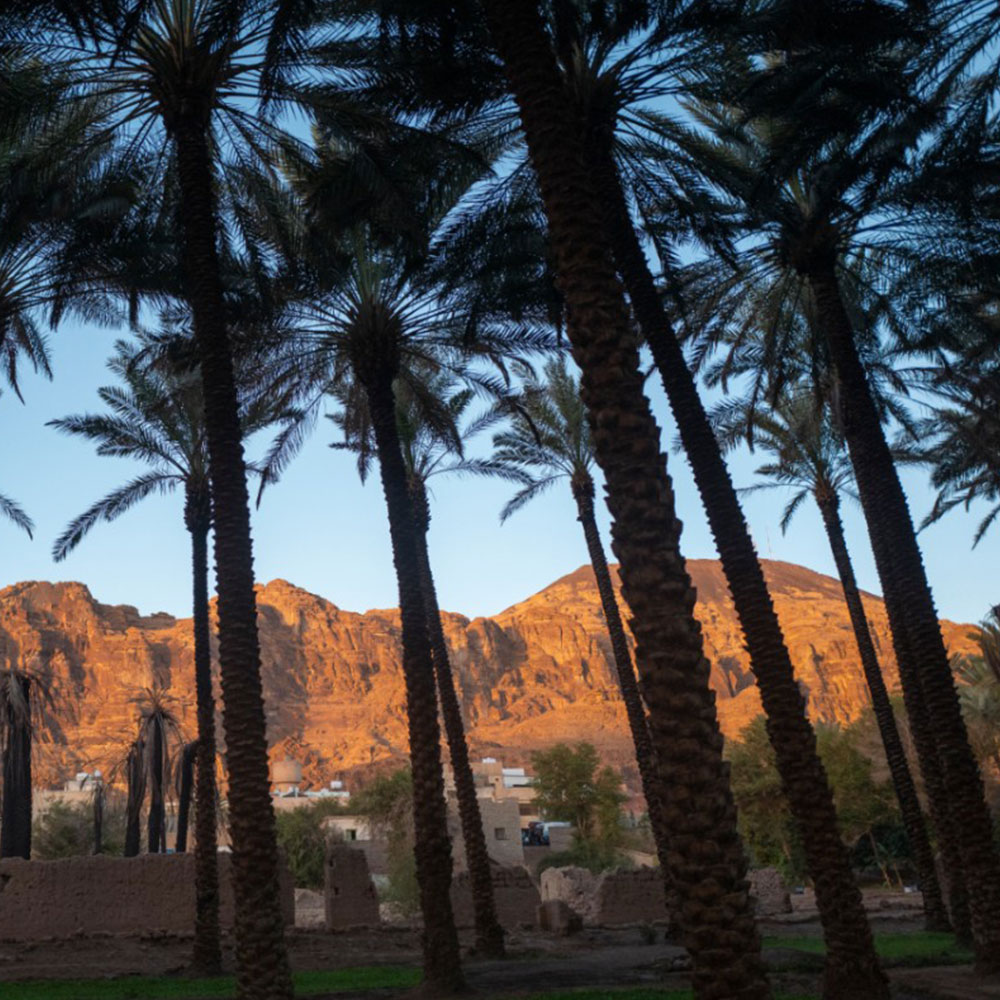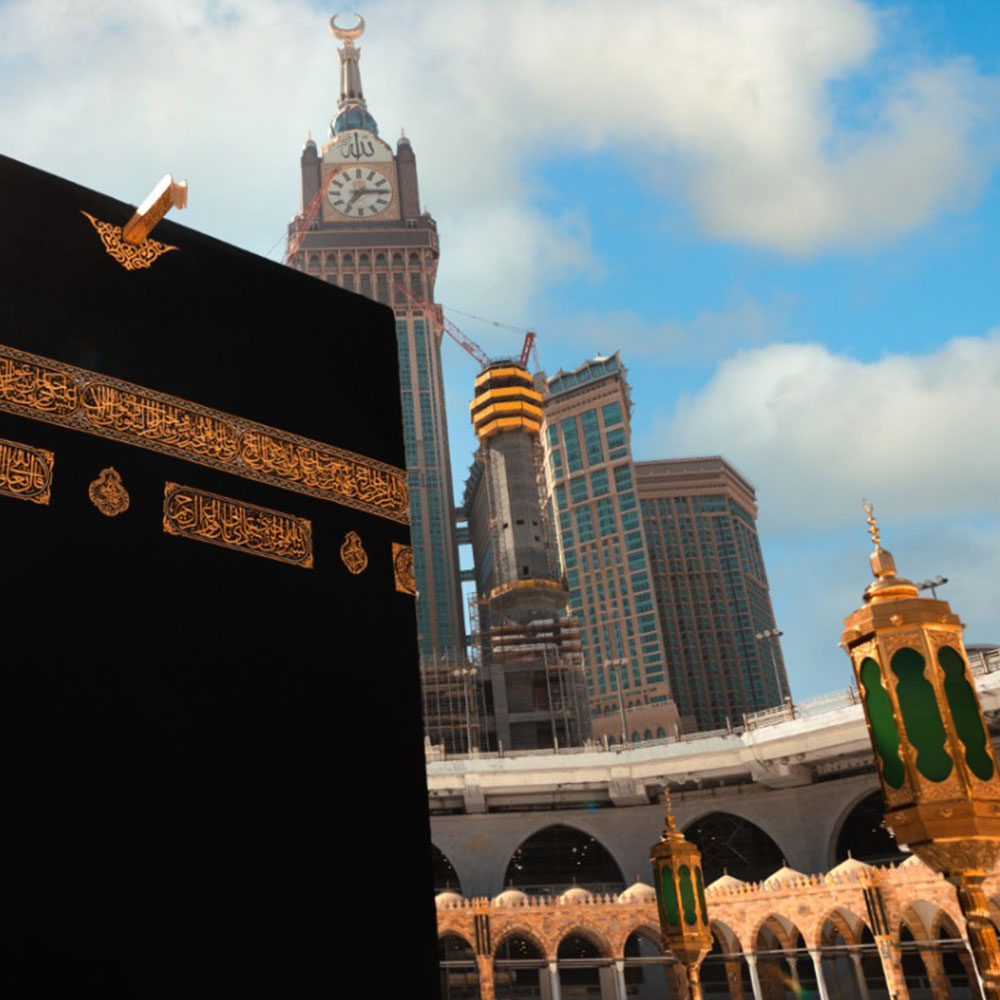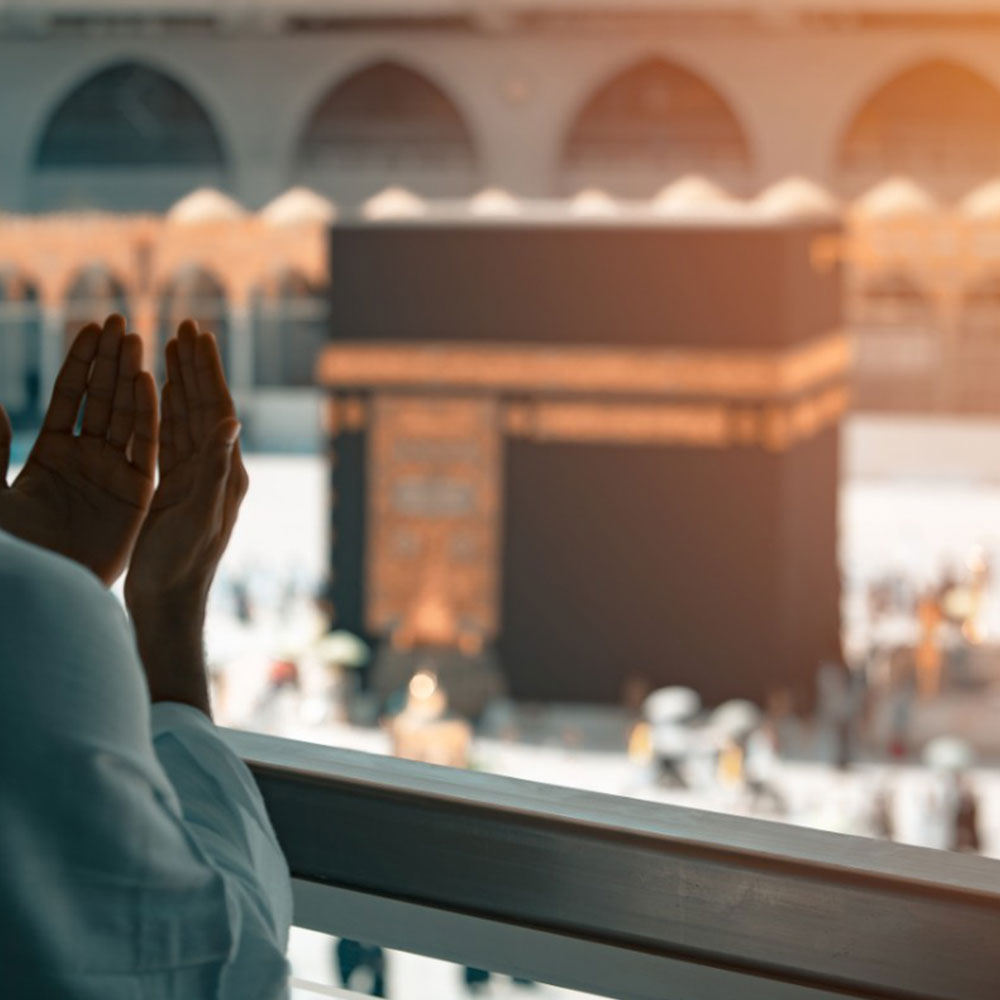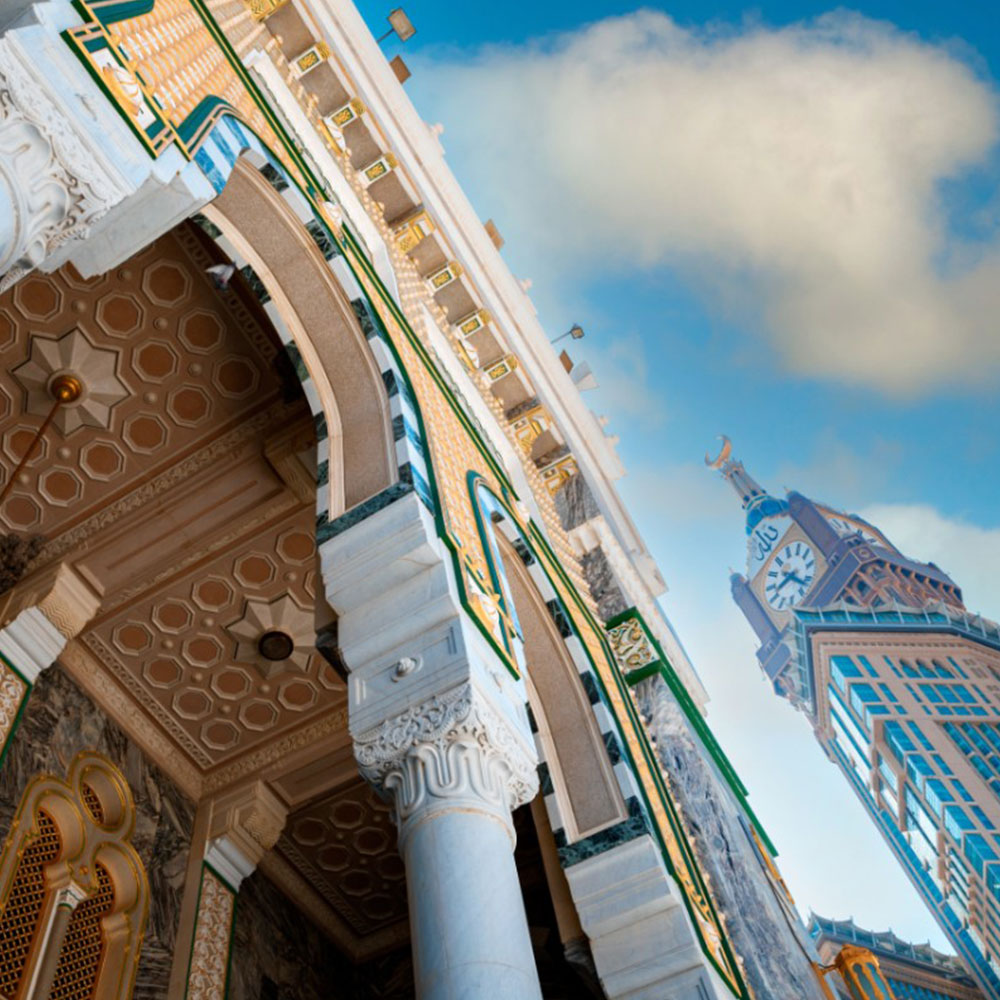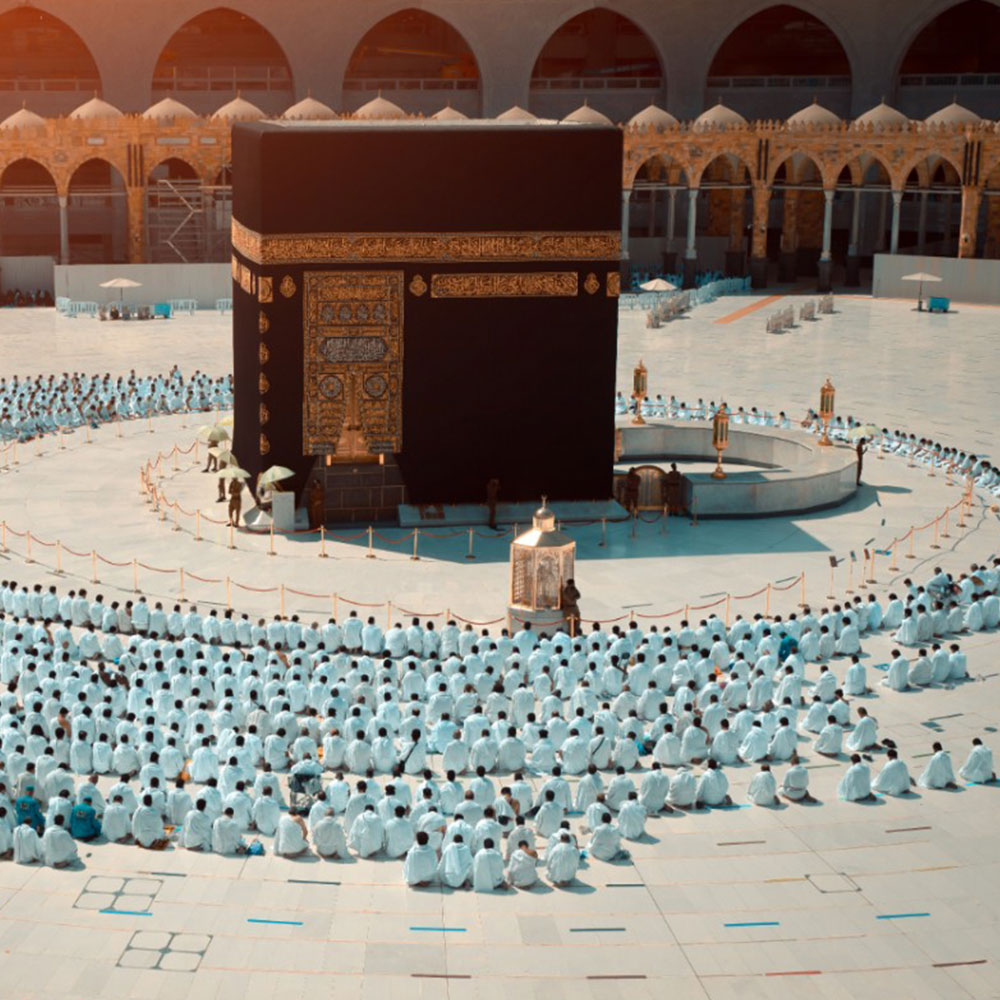This northern region is considered the gateway to the Levant from the Gulf, with a land border crossing to Jordan, making it an ideal destination for a 2-center trip. The province is famous for cultivating olive trees and is responsible for approximately 67% of the olive oil made in the Kingdom. Al Jouf is also home to the widespread cultivation of palm trees and produces approximately 150,000 tons of dates every year.
There is plenty to see and do in Al Jouf, not least visits to the mountain-top Zaabal Castle, located north of Sakaka; Marid Castle at Dumat Al-Jandal and The Columns of Rajajil, often called the Stonehenge of Arabia.
The Tabuk region is rich in antiquities and archaeological sites such as petroglyphs, inscriptions, forts, palaces, walls, and the remains of the Hejaz Railway line, the main station of which is located in Tabuk. Wadi Dam is famous for rock art and inscriptions dating to different chronological periods, and Tabuk castle is considered an archaeological landmark of the region. Another noteworthy destination is The Prophet’s Mosque, also known as the Repentance Mosque. Originally built with mud and roofed with palm trunk trees, it was restored in 1652 and eventually, its complete renewal was ordered by the late King Faisal ibn Abdul-Aziz, along the pattern of the Prophet’s Mosque in Al-Medinah.
Tabuk’s charming coastal towns, such as Haql and Sharma, offer clear seas and pristine beaches.
A visit to AlUla, a true living museum spanning hundreds of years of Arabian history, is often combined with Riyadh and Jeddah, and well worth the trip. Deep in the desert, AlUla is Saudi Arabia’s first UNESCO World Heritage Site. The now famous ‘Elephant Rock’ is a prominent feature, but your time in AlUla should also include a visit to the historic alleyways of AlUla Old Town, the “open library” of inscriptions at Jabal Ikmah, and, for the more adventurous, an array of activities includes hiking, ziplining, sand buggies, star gazing, and much more. AlUla is also home to arts festivals, international concerts, and global sporting events.
Riyadh is a modern metropolis with a thriving financial and business centre, and a well-established cultural and restaurant scene. It is a city rich in history, boasting myriad forts, palaces, museums, and an ancient labyrinthine of colorful souqs, alongside luxury hotels, expansive malls, and quirky boutiques.
Diriyah was the original home of the Saudi royal family, and as such was declared a UNESCO World Heritage Site in 2010. Visiting At-Turaif heritage district is a must when you are in Diriyah, with its wonderful castles and public green areas, with its historical stories and traditions of its people, as the place where Kingdom was born. Diriyah’s parks also host seasonal events, folk performances, markets and restaurants with an authentic traditional style.
This cosmopolitan port city on the Red Sea is an eclectic mix of old and new, with UNESCO Heritage Sites, historical buildings and bustling souks alongside modern hotels, international concerts, the Saudi Arabia Grand Prix, and some of the best seafood restaurants in the region. The ideal destination for a culinary tour, coffee tasting and shopping for handicrafts, as well as the perfect spot for scuba divers, water sports enthusiasts and sun worshipers.
Yanbu is a port city on the Red Sea coast of western Saudi Arabia. The old town is an ancient spice route staging post where T.E. Lawrence — the British military officer famous for his role in the Great Arab Revolt — lived in a typical Hijazi building at some point between 1915 and 1916. Many of the attractions are in the historical area around the harbor, which comes alive at night with locals eating Red Sea-caught fish while overlooking the water. Nearby, sandy beaches line Sharm Yanbu Bay, where some of the best dive sites in Saudi Arabia await, and where, even in winter, the water in this part of the Red Sea never drops below 20 degrees Celsius.
Located in the east of the country, on the Arabian Gulf, Dammam is known for its green parks and sandy beaches. Winter daytime temperatures average in the low 20s Celsius during the day and around 10 degrees at night. The region enjoys a growing reputation as an arts, sports and entertainment destination, is home to the kingdom’s first street-art exhibition, and offers a range of cultural hubs and museums as well.
Warm, sunny, inviting, and a dazzling undersea world of some of the most spectacular coral reefs to be found anywhere, Aqaba is a fun place. Situated at the tip of the Gulf that bears its name, it is a microcosm of all the good things Jordan has to offer, including a fascinating history with some outstanding sites, excellent hotels and activities such as (Snorkeling, Water Sports, a glass bottom boat ride, cycling… ECT), superb visitor facilities, good shopping, and welcoming, friendly people who enjoy nothing more than making sure their visitors have a good time.
Taif is located on the eastern slopes of the Sarawat Mountains, and is known for its cool weather, natural beauty, and cultural heritage. The city has over 700 farms, famous for producing citrus fruits, scented roses. Top attractions in Taif include the Wahba Crater – the largest, deepest volcanic crater in Saudi Arabia, with a diameter of 3,000 meters; Al Rudaf Park, Kaaki Palace, Al-Hada Mountain, Al-Kar Tourist Village, Saysed National Park, Al-Balad Market, and several museums such as the Shubra Palace and Al-sharif heritage museum.
Abha is the capital of Aseer and home to multiple historical and cultural sites. The city has a gondola to transport visitors from its lowest to highest point year-round. Recent developments have focused on promoting its artistic and cultural communities and small businesses. Bin Hamsan Heritage Village in Khamis Mushayt is the largest archaeological museum in the region with 1250 pieces and a number of historical agricultural tools. Al-Abo Sarrah Palaces are nearly two centuries old and built using local natural resources such as stones and timber.
Rijal Almaa is just 45 km from Abha. With its stone-built castles and colourful buildings, it is on the list of UNESCO Tourism Villages of the World, as an outstanding example of traditional human settlements that are perfectly adapted to their environment and their social and economic raison d’être. Places to visit whilst in Rijal Alma include the Rijal Almaa village museum, Qasabat Al-Owus Tower, and Shaokan mountain, named after the abundant prickly pear trees that grow here. One of the main attractions in Rijal Almaa village is Honey Cottage, where you can sit on its rustic seats and enjoy an exclusive experience of tasting Rijal Almaa’s varieties of honey.
Al Baha sits 2,500 meters above sea level, and enjoys a pleasant climate, surrounded by more than forty forests, including Raghdan, Al-Zaraeb and Baidan. Camping, trekking, exploring the Marble Village of Dhee Ayn, and tours of the region’s ancient gold mining sites are popular activities to enjoy.
Jazan, located along the southern tip of Saudi Arabia’s Red Sea coast, boasts a varied landscape, which includes pristine alabaster beaches, sparkling azure seas, verdant forests, and rugged mountain peaks. This port city is most renowned for being a starting point to the unspoiled Farasan Islands, a protected group of islands and coral islets, home not only to a wealth of wildlife and vibrant marine creatures, but also to those interested in discovering Saudi Arabia’s heritage and diverse geography.
Known as the radiant city, Medina, officially Al Madinah Al Munawwarah, is the second holiest city in Islam, located in western Saudi Arabia. This city is highly significant for its deep-rooted history, religious importance, and serene beauty.
Medina is most famously home to Al-Masjid an-Nabawi, or the Prophet’s Mosque, which was built by Prophet Muhammad himself. This grand mosque, adorned with a golden dome and sleek minarets, is an architectural marvel and serves as the burial place of the Prophet. It’s a pilgrimage site for millions of Muslims worldwide, and also welcomes non-Muslims to visit.
Besides its religious landmarks, Medina is known for its date farms, which produce some of the finest dates in the world. The bustling dates market, or souq, is a must-visit.
Quba Mosque and Qiblatain Mosque are also significant sites, with the former being the first mosque in Islam’s history and the latter known for being the place where the qibla (direction of prayer) was changed.
Medina’s residents are known for their hospitality and the city itself exudes a peaceful ambiance, harmonizing with its deeply spiritual significance. If you’re a history or culture enthusiast, the rich tapestry of Islamic history woven into Medina’s cityscape offers an unforgettable journey.
Mecca, or Makkah, is the birthplace of Prophet Muhammad and the site of the revelation of the Quran, making it the holiest city in Islam. It’s located in the Hejazi region of Saudi Arabia, and open to Muslims only.
The city’s crown jewel is undoubtedly the Masjid al-Haram, the largest mosque in the world. At the heart of this mosque is the Kaaba, a cuboid structure that Muslims around the world face during their prayers. It’s also the focal point of the Hajj pilgrimage, an annual event that draws millions of Muslims from across the globe, who come to perform rituals dating back thousands of years.
The Abraj Al-Bait Clock Tower, standing tall near the Masjid al-Haram, is another marvel. This skyscraper is one of the tallest and most notable in the world, featuring a massive clock face visible from miles away. It is also home to a five-story shopping mall, and a museum showcasing the history of the Islamic world.
Just outside the city, the plains of Arafat hold great religious significance, as this is where Prophet Muhammad is believed to have given his last sermon.
Despite being a deeply religious city, Mecca is also a thriving metropolis with modern amenities, shopping centers, and luxury hotels, juxtaposed against its ancient religious landmarks. A trip to Mecca is not just a spiritual journey but also a remarkable cultural experience.




